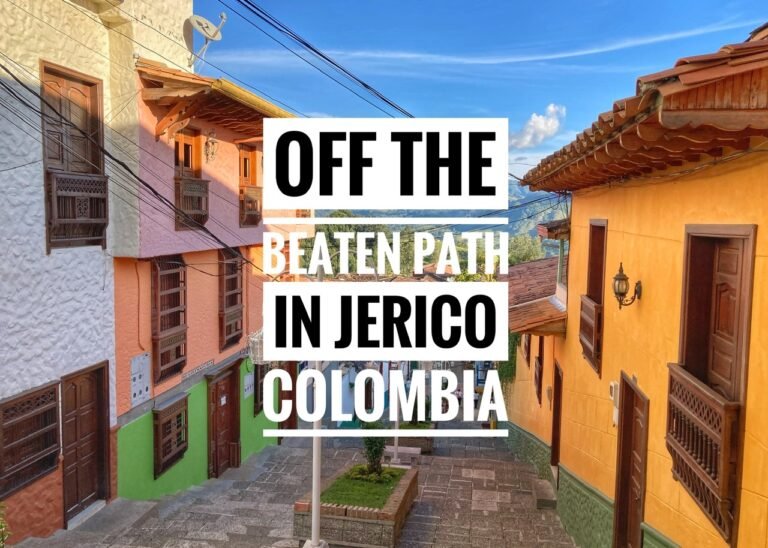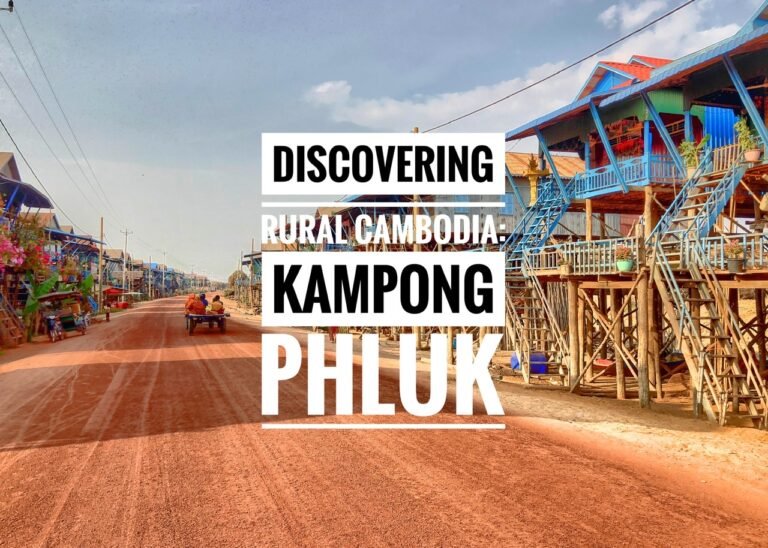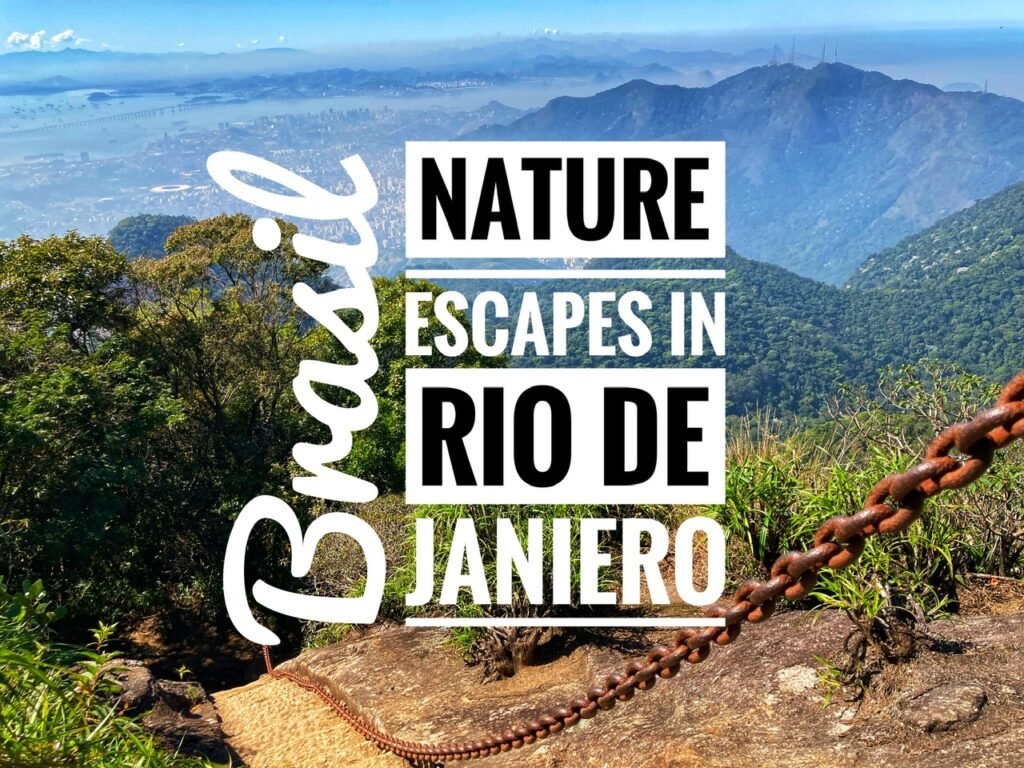
Most people know that we are not really city people. We much prefer quiet villages or getting out into nature on the trail. And although we like Rio de Janiero, the real reason we LOVE it is that it melds so flawlessly with the mountains, and the sea, much the same as another favorite of Istanbul.
Because of this, there is a lot of hiking to be found, but unfortunately, not all of those hikes are necessarily safe…a huge downside of this city. One hike that is deemed very safe, and also very popular, is within city limits and takes you atop the peaks seen in the last post from Ipanema Beach called Dois Irmãos, or Two Brothers.
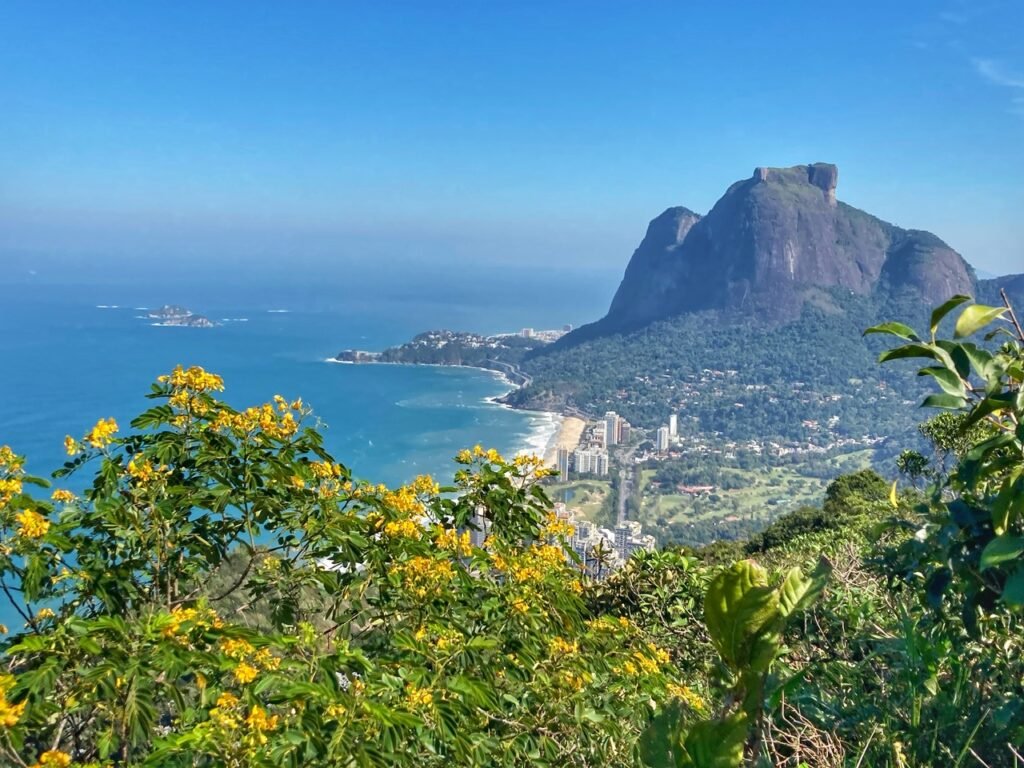
Dois Irmãos Hike
From the top of Dois Irmãos, facing west toward Gavea Beach. Gavea Rock (Pedra de Gavea) in the background is another popular hiking route but does involve some climbing and you need ropes. So unfortunately that was out for us.

So worth the climb!! The view looking east towards Ipanema, Christ the Redeemer, and the awkwardly-shaped “heart(?)” of Rio de Janeiro, which you can clearly see from this vantage called Rodrigo de Freitas Lagoon.
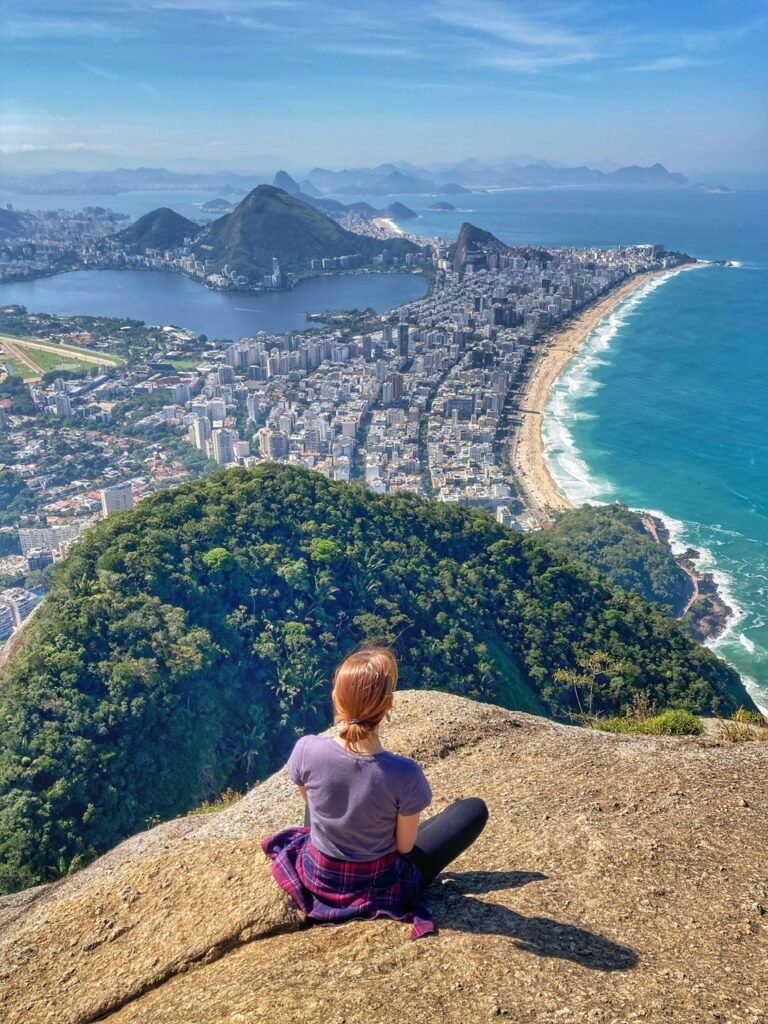
Mandy soaking in the stunning view. And, no this Instagrammy photo is not the reality. We were far from alone. 🤣
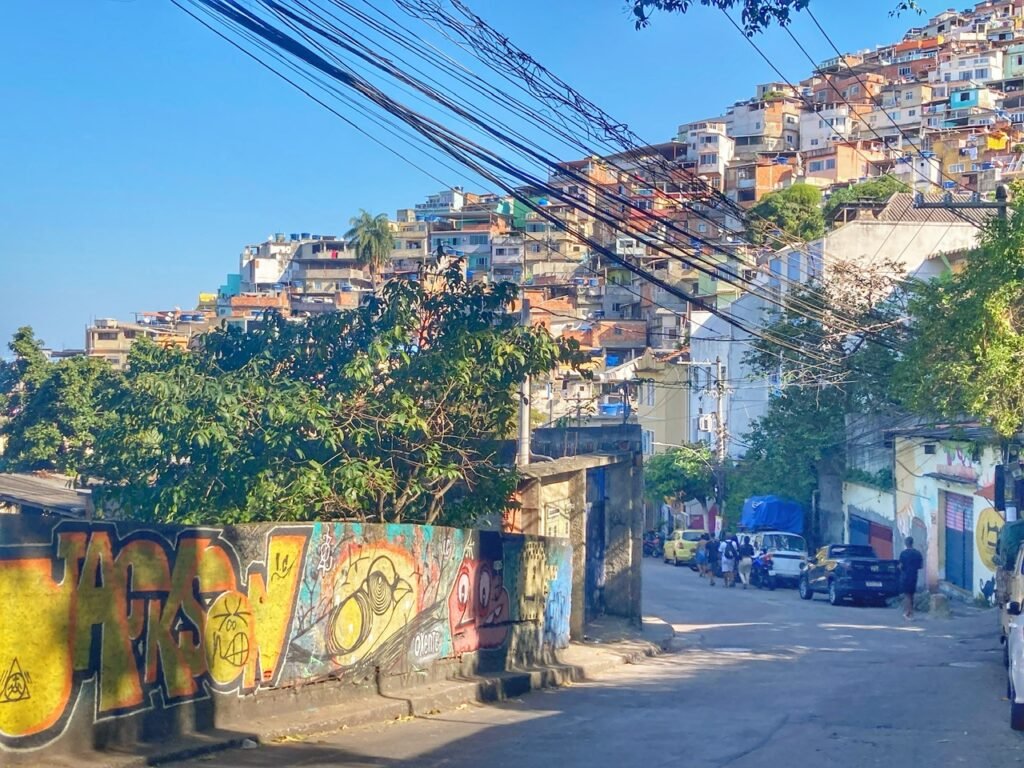
So…what’s the real story? To get to the Dois Irmãos, you have to first go through the favela (the Portuguese word for slum) known as Vidigal. One of the first things many people learn about traveling to Rio de Janiero, it’s to avoid the favelas, known to be dangerous no-go zones. While some of these warnings is evidently very warranted, they are not all the same and Vidigal is known to be one of the safest, and most tourist-friendly options.
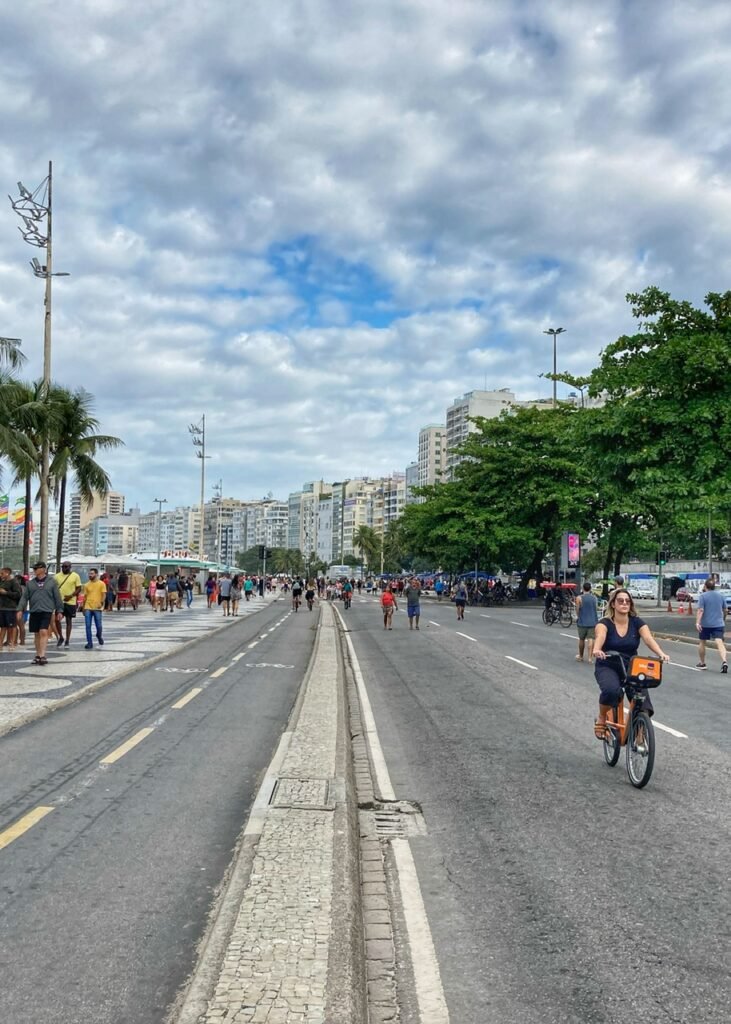
To arrive to Vidigal from Copacabana, you can take Bus 104 for 4 Ríales/person ($.80) or a taxi for 20 Ríales ($4.20). Because it was Sunday and the main road through Copacabana was closed for Ciclovia (bikers and pedestrians only), we chose the easier option using our favorite Rio Taxi App called 99, which is usually about half price of Uber.
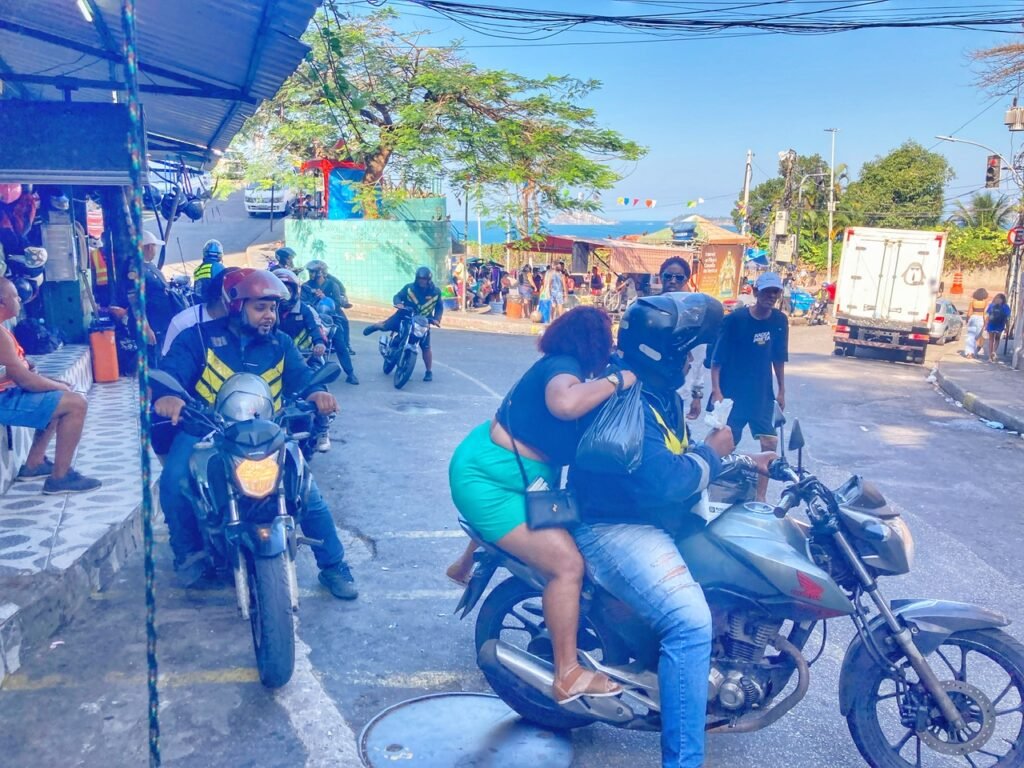
Unfortunately, taxis and Ubers do not enter most favelas due to the winding and cobbled nature of their streets, so our taxi driver dropped us off at the entrance to the neighborhood. Here you will find a cluster of eager motobike taxi guys who will barrel you to the top of the hill for 10 ríeles each ($2.10). (Inevitably cheaper if you speak Portuguese.) You also have the option to walk, which we would not recommend, or take a combi mini-van which costs a bit more.

Always up for the adventure, we each grabbed a driver, and threw on the provided helmet after confirming the price was 10.
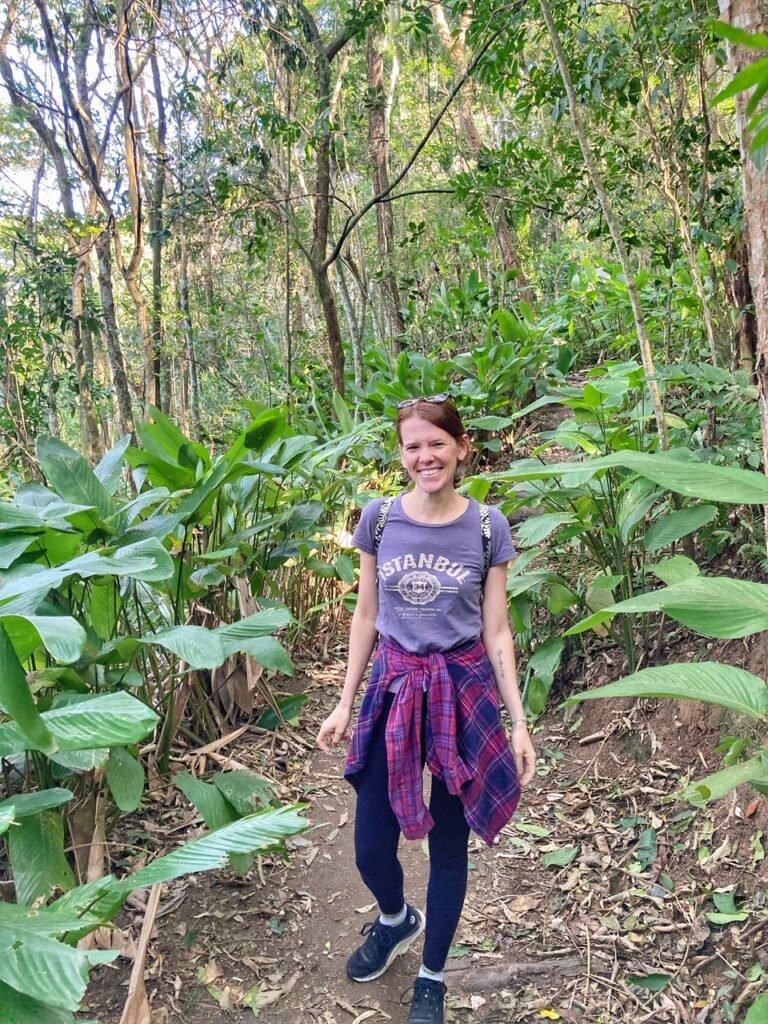
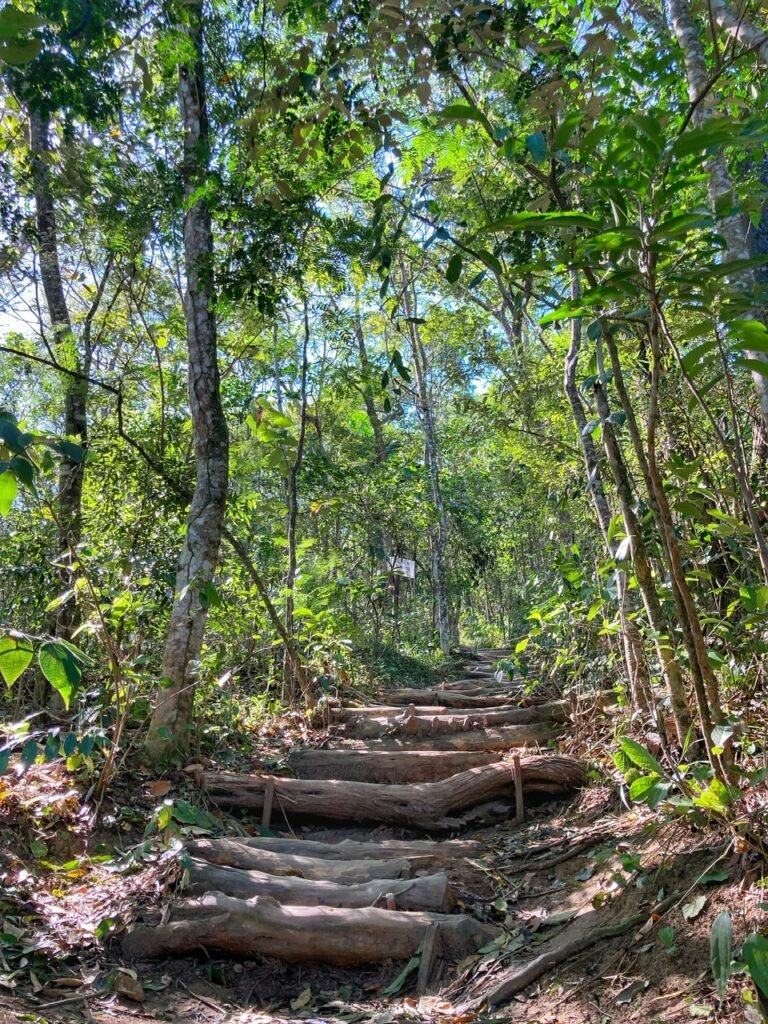
From the top of the hill, you walk towards the left past the fútbol pitch, and head into the inviting forest. Mandy couldn’t have been happier that day because she was finally feeling good after two challenging weeks.
And hope you brought some water because almost immediately, the uphill begins. It continues either with stairs like this, or rocks for a good 45 minutes before arriving at the top.
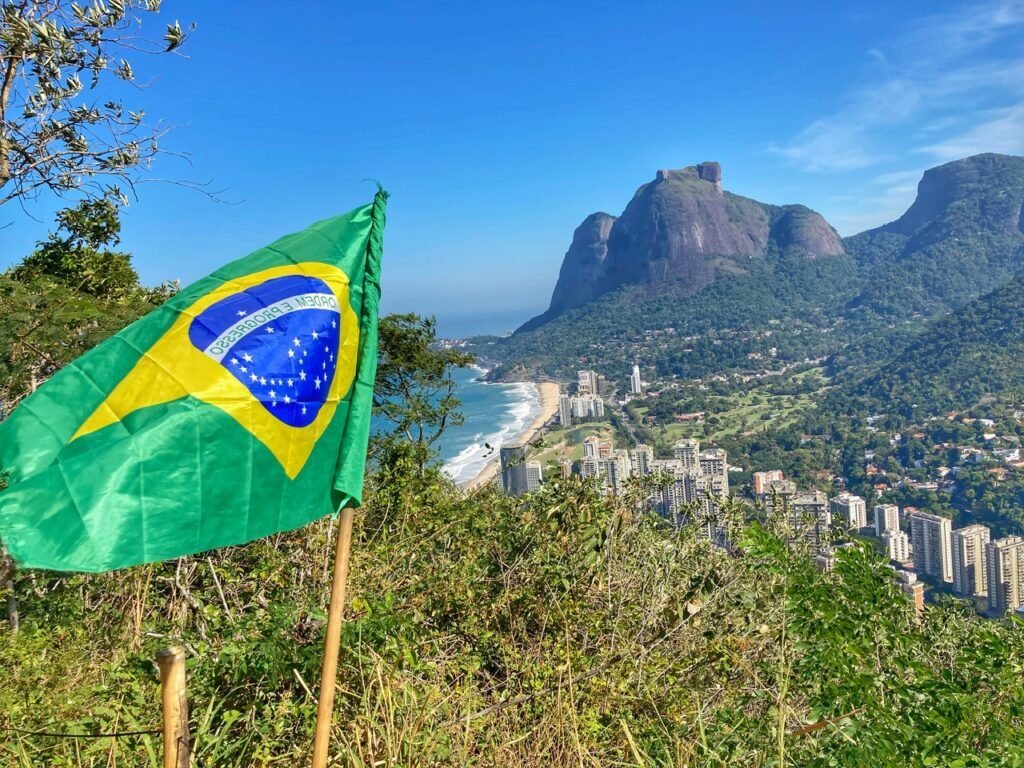
One of the first lookout points, complete with a Brazilian flag. Speaking of which, ever been curious about this worldly-looking flag? The green background represents the rainforest and the yellow rectangle in the middle symbolizes the mineral resources in the country, especially in gold. The shiny blue circle represents the sky and the stars represent the country’s states.
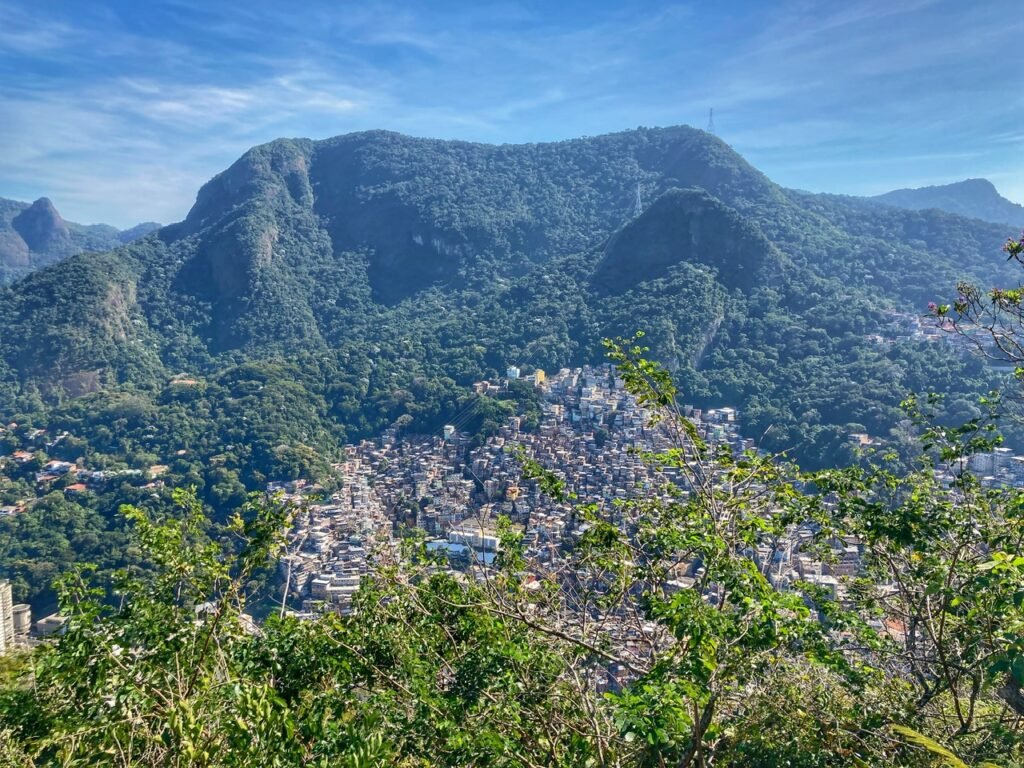
The favela of Rocinha far below is the largest in Rio with ~200,000 people. Favela life, typically tucked into steep hillsides, is packed with culture and usually one of high population density. Despite its large population, Rocinha takes up less than a square mile of land. This extreme lack of space forces families to build houses on top of one another, but still almost all have running water and electricity. However, it often results in house structures up to 11 stories tall. According to the news, which isn’t always the most accurate, it is also one of the most dangerous due to drug-related violence.

Back to the trail. By the way, if you forget your water, there are people selling it on the trail. And yes, almost everywhere you go will take your credit card. We’ve gotten quite a chuckle at people on the streets having yard sale-type signs and accepting credit cards as well.
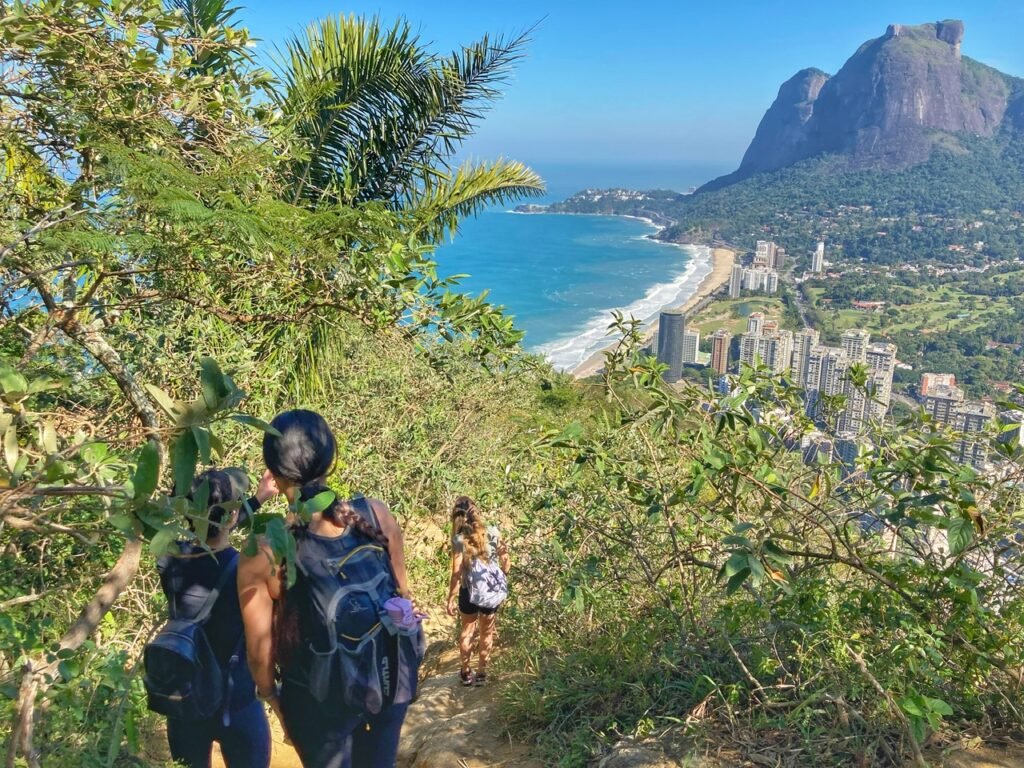
The steep hill headed down.
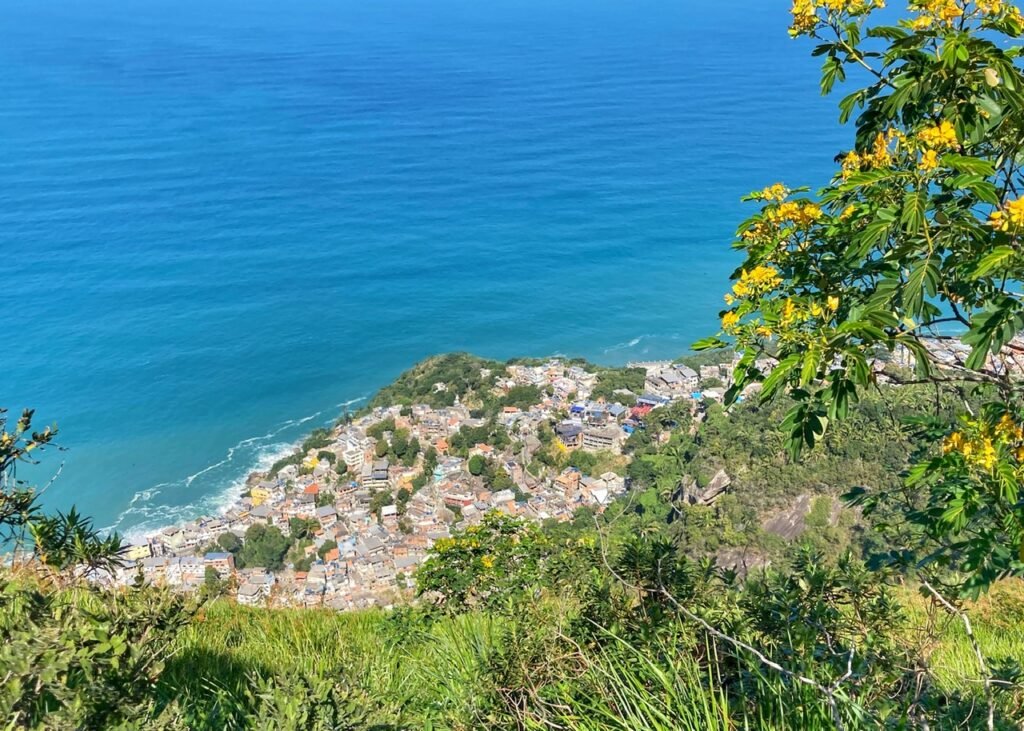
Heading up even further, we are greeted with our first view of Vidagal, the favela we went through by mototaxi.
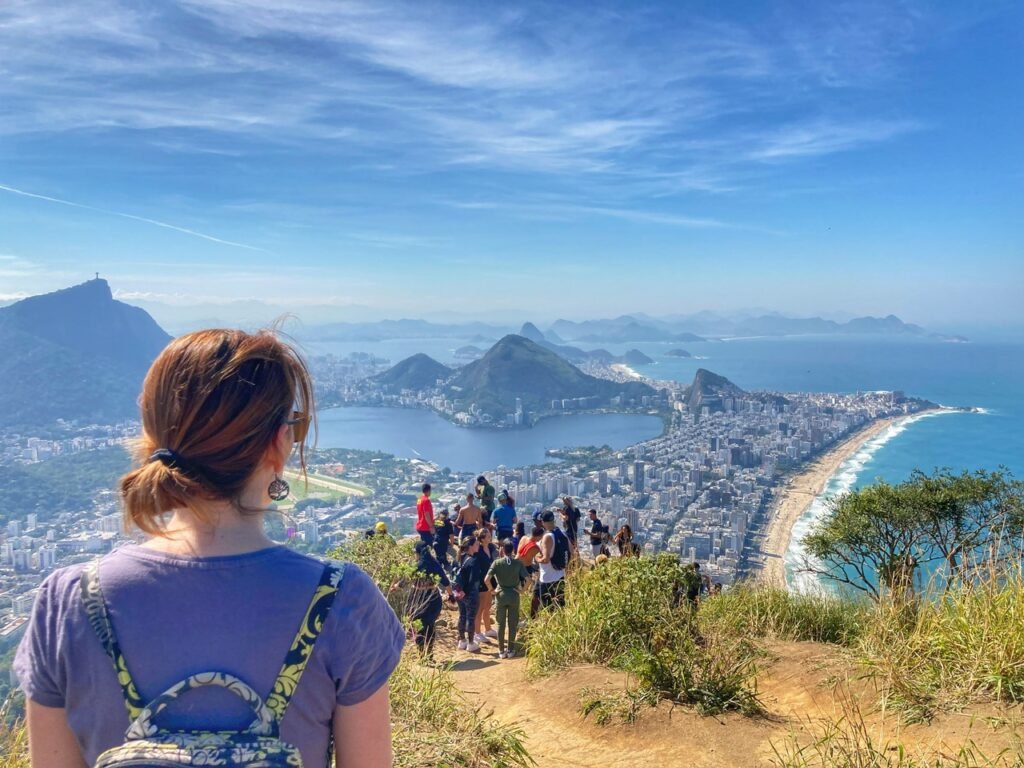
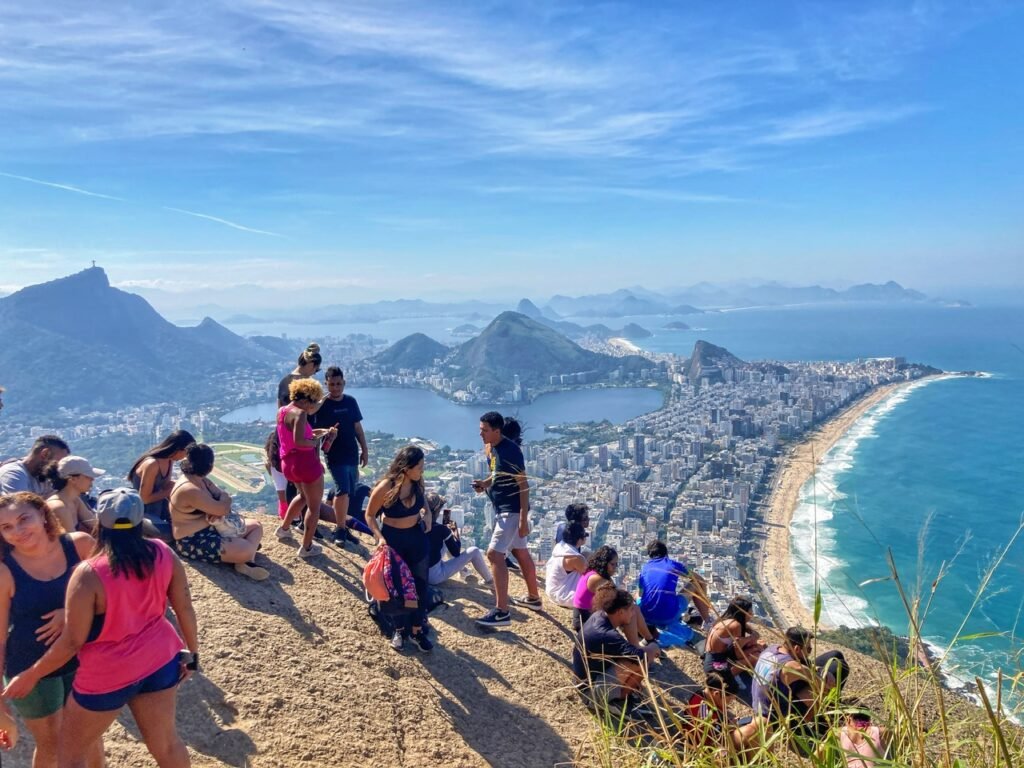
Arriving to the top a swarm of people clustered near the edge.
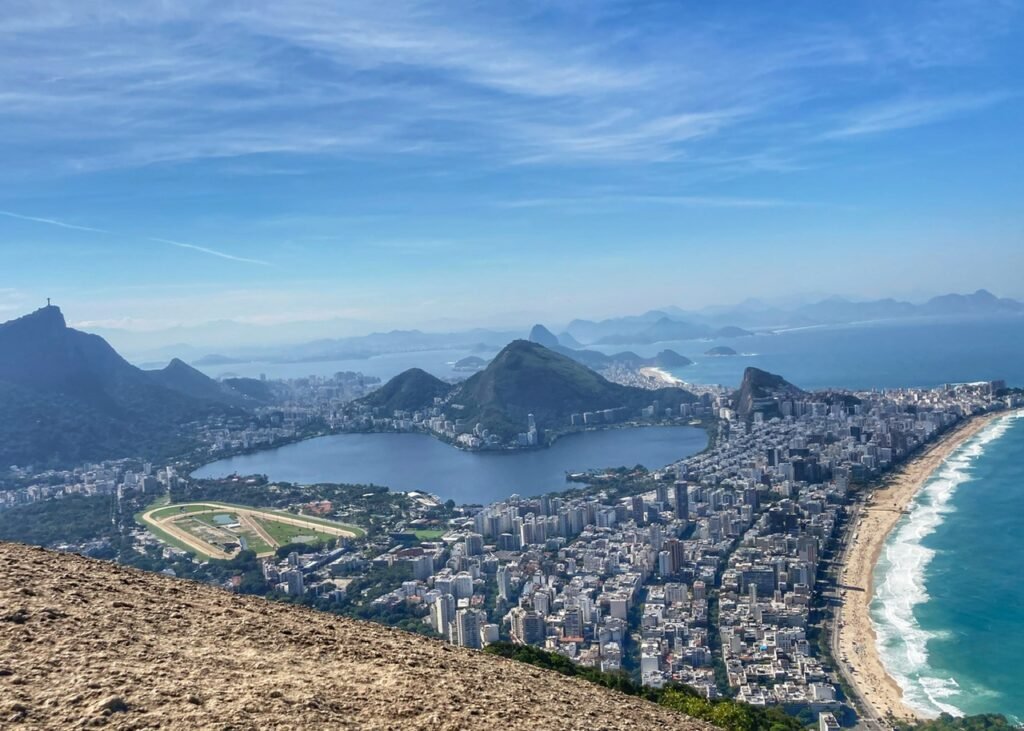
To await taking their million-dollar view photos.

This place certainly begs for a panorama.
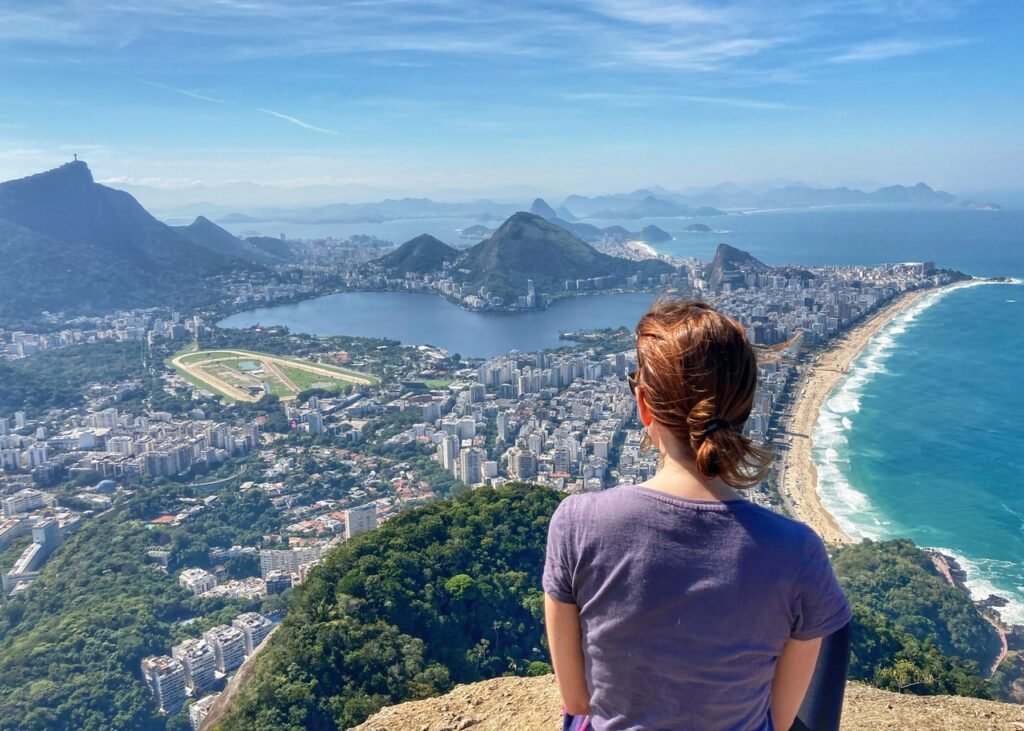
But when you’re sitting on the edge, it’s kind of easy to get lost in the magic of the moment.
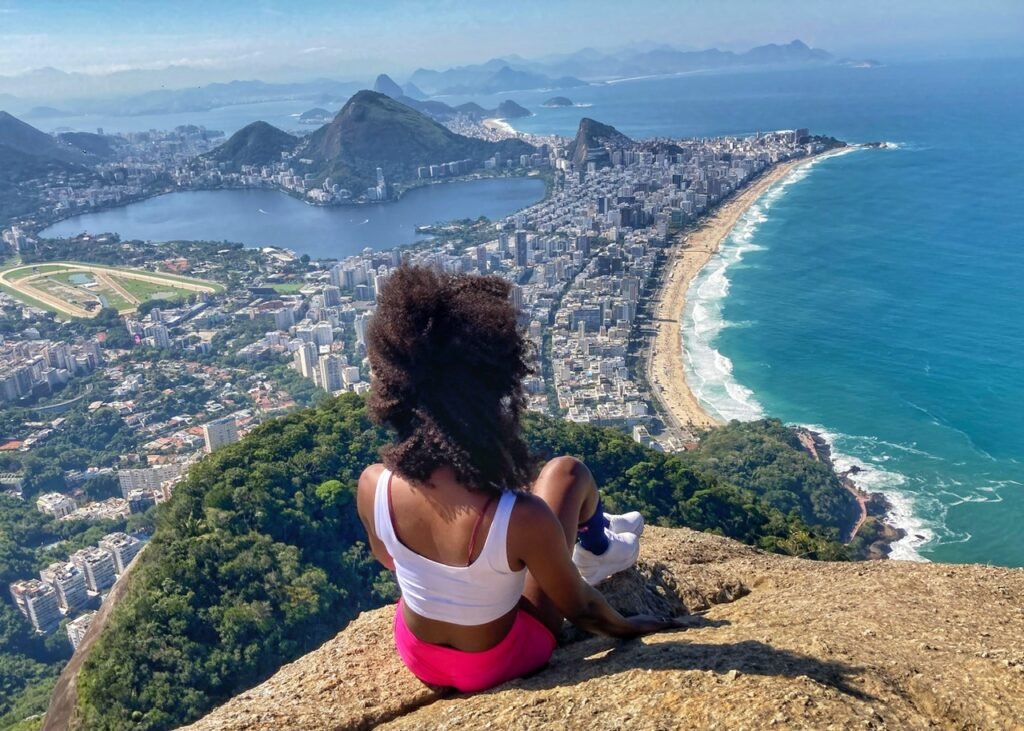
It was also incredibly entertaining to watch a posse of pretty girls in sports bras posing for some “Instagram Gold.”
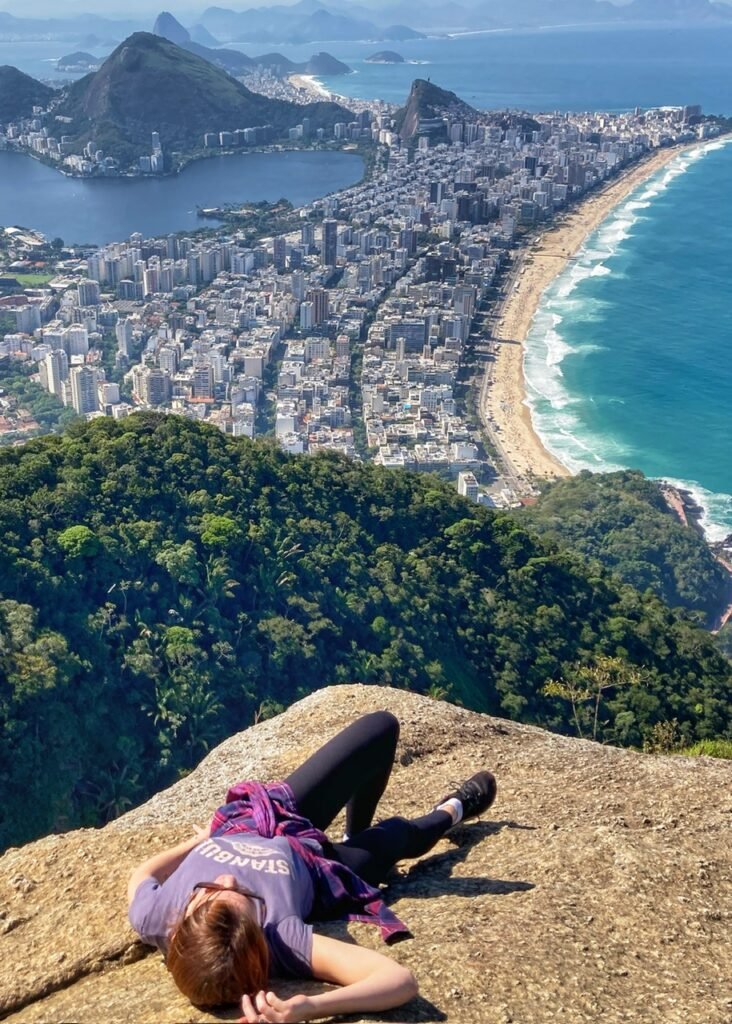
Mandy, in the meantime, flops down like a potato sack trying to imitate one of their sexy photos and fails miserably. 🤣
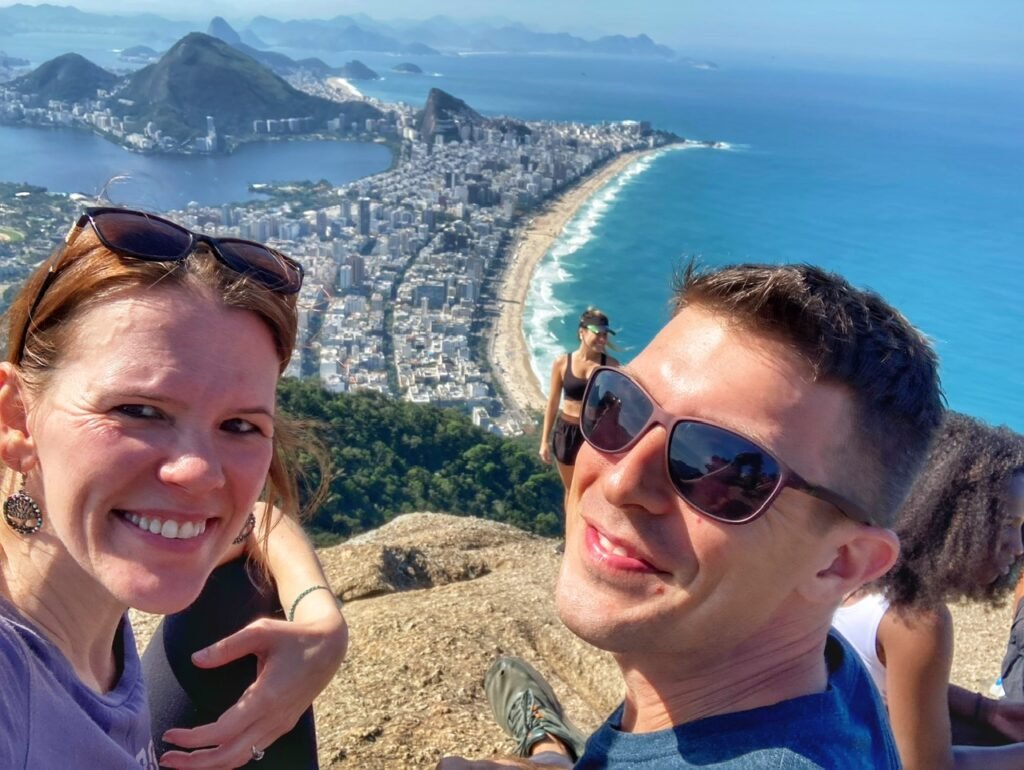
Ah, well. We’re too busy enjoying our forties to long for our twenties again.
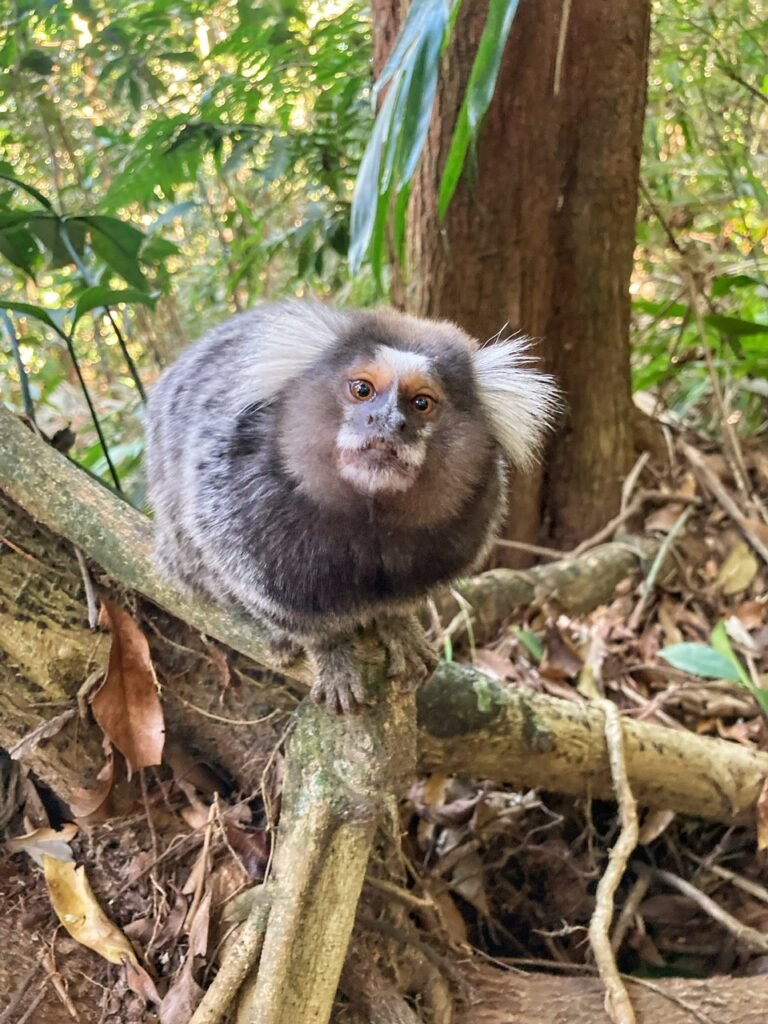
As we trodded down the Two Brothers peak, we were very surprised to see this little guy, along with several buddies, scurrying around inquisitively before us on the trail, but completely open to our presence.


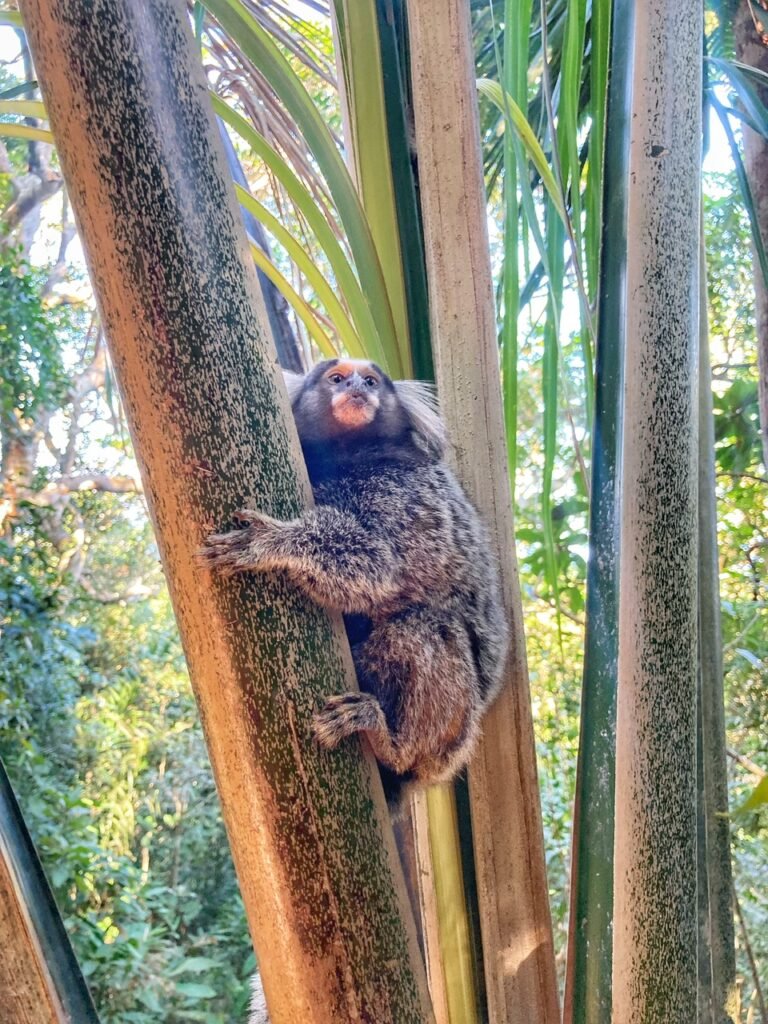
The most common monkey in the Mata Atlântica (the forest found in Rio de Janeiro) is this one, actually a Common Marmoset, native only to east and central Brazil. However, they’ve been introduced to areas of Rio de Janiero and as far south as Buenos Aires. They are quite small between 16 and 20 centimeters tall and weigh no more than 300 to 350 grams. Common marmosets are therefore also the smallest representative of the higher primates. There are around 118 species of monkeys in Brazil.
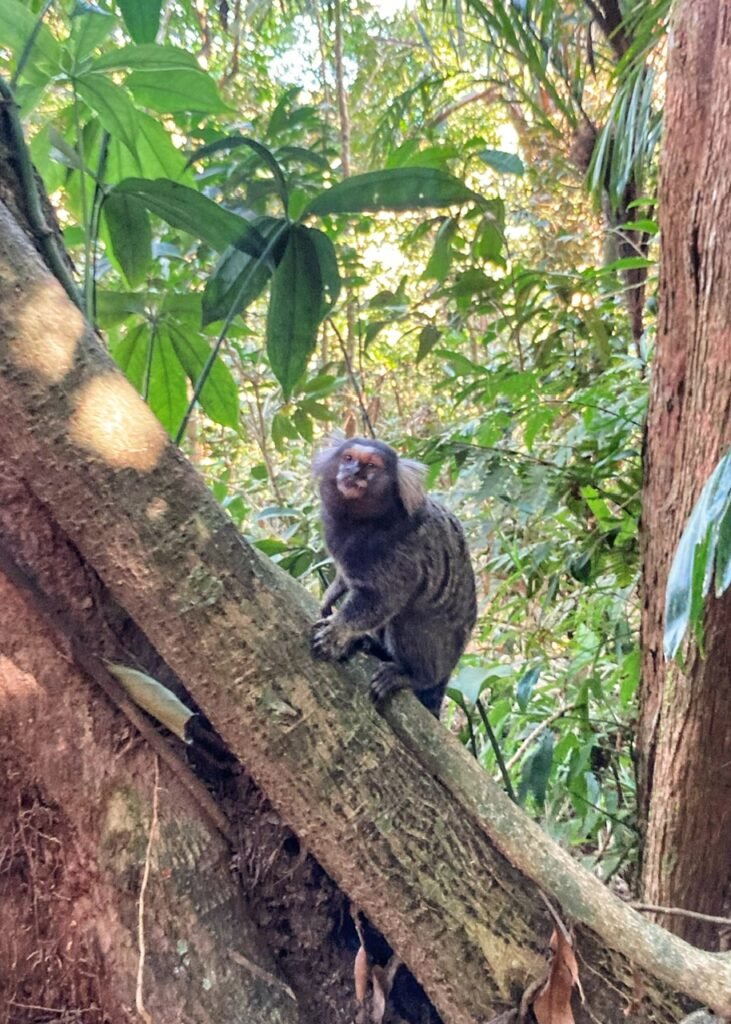
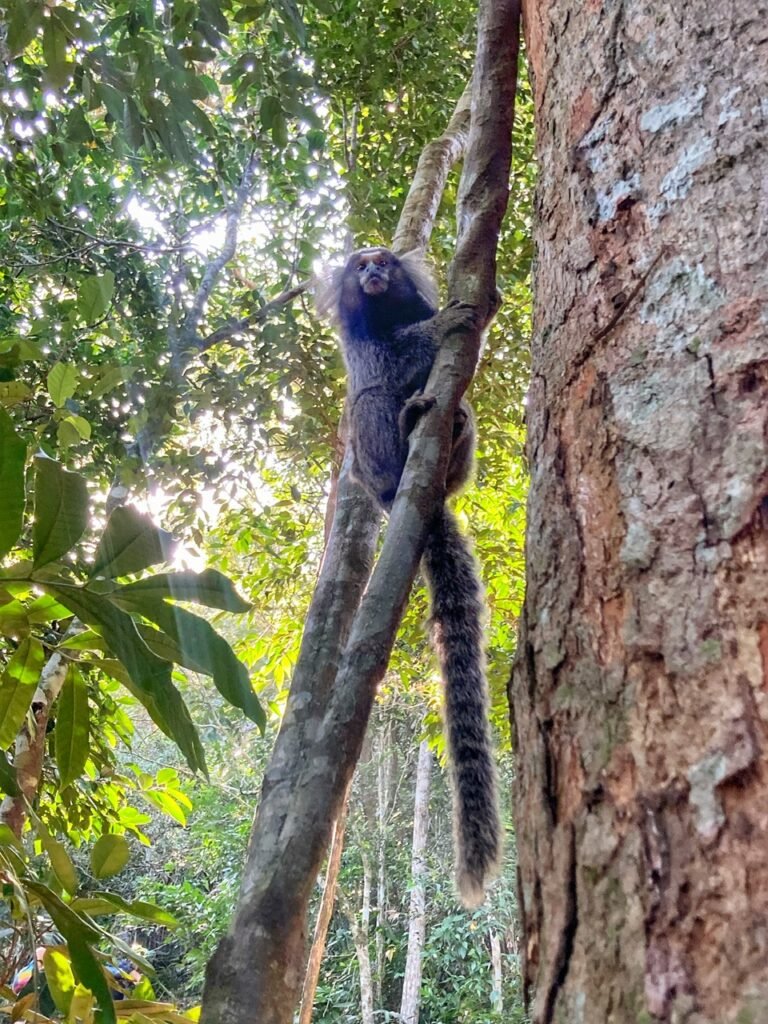

Marmosets usually live in groups of three to 15 individuals. There were four in this group. Unlike other primates, they are capable of climbing up and down a tree in a vertical position. It reminded us a bit of the Monchichi toy from the 70s/early 80s.
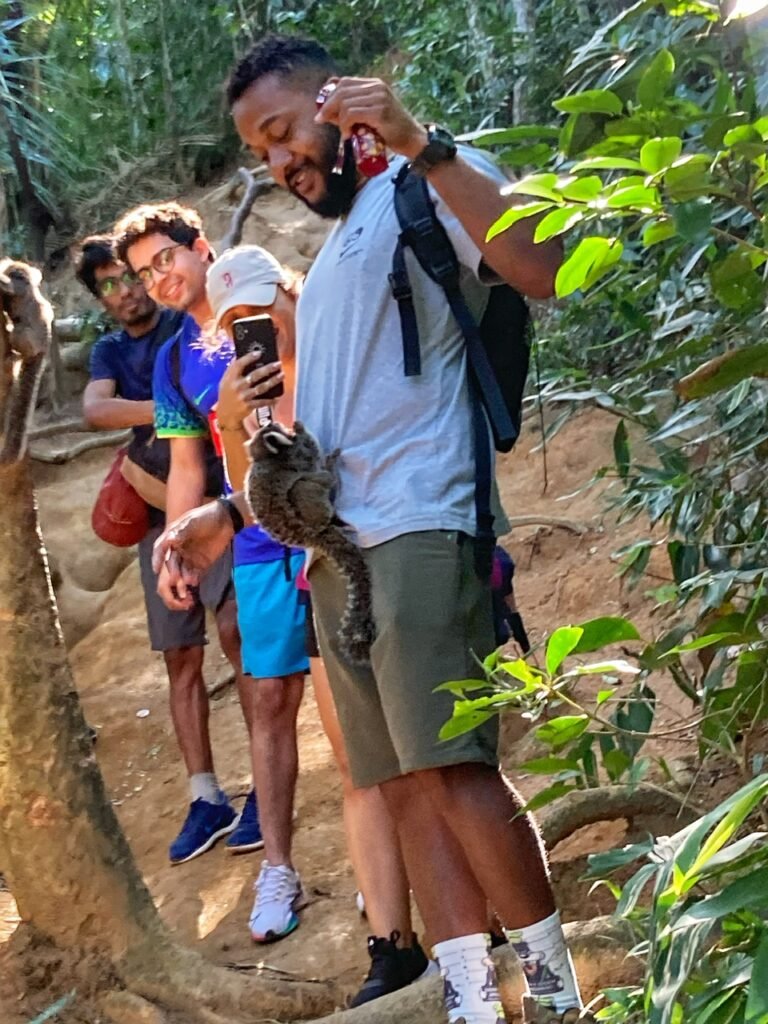
The marmosets spend most of their day foraging. If humans are nearby, they are well aware of the foraging opportunities and will climb on you very openly looking for treasure
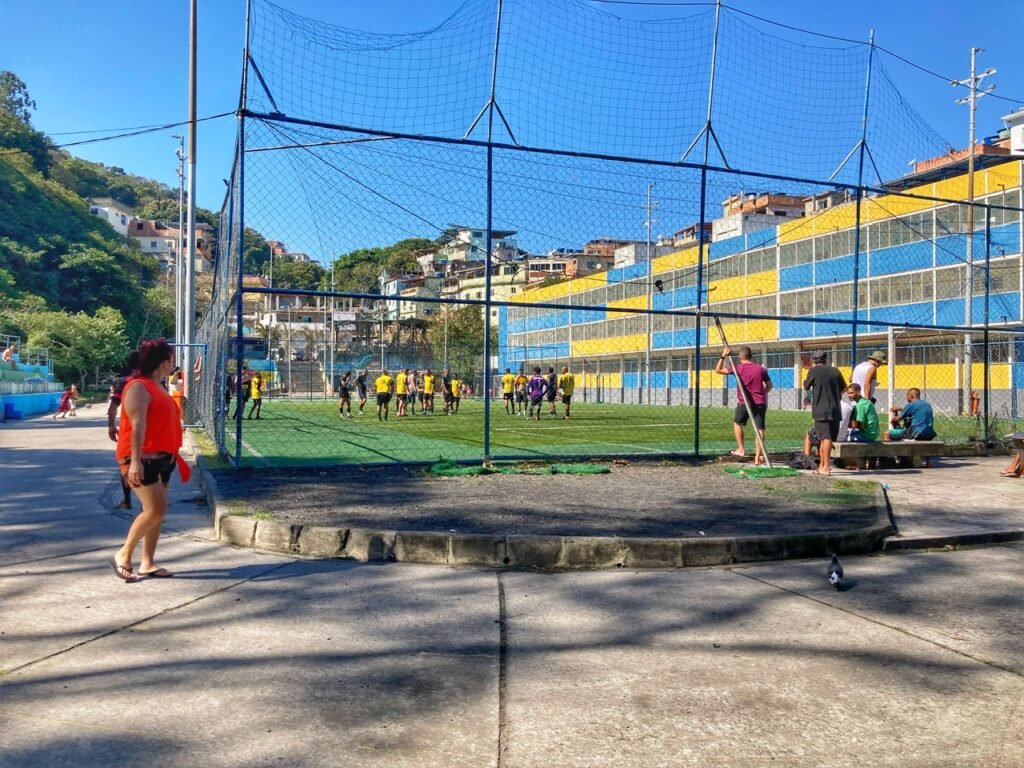
Heading back down into Vidagal, we paused to watch a fútbol match for a minute. We left pretty quickly, however, because there were heavily armed civilians strolling around which made us a bit nervous.

We then thought we’d reward ourselves with a drink at Bar de Laje, a quite uppity bar with a hell of a view at the top of Vidigal, which we continued to walk up towards.
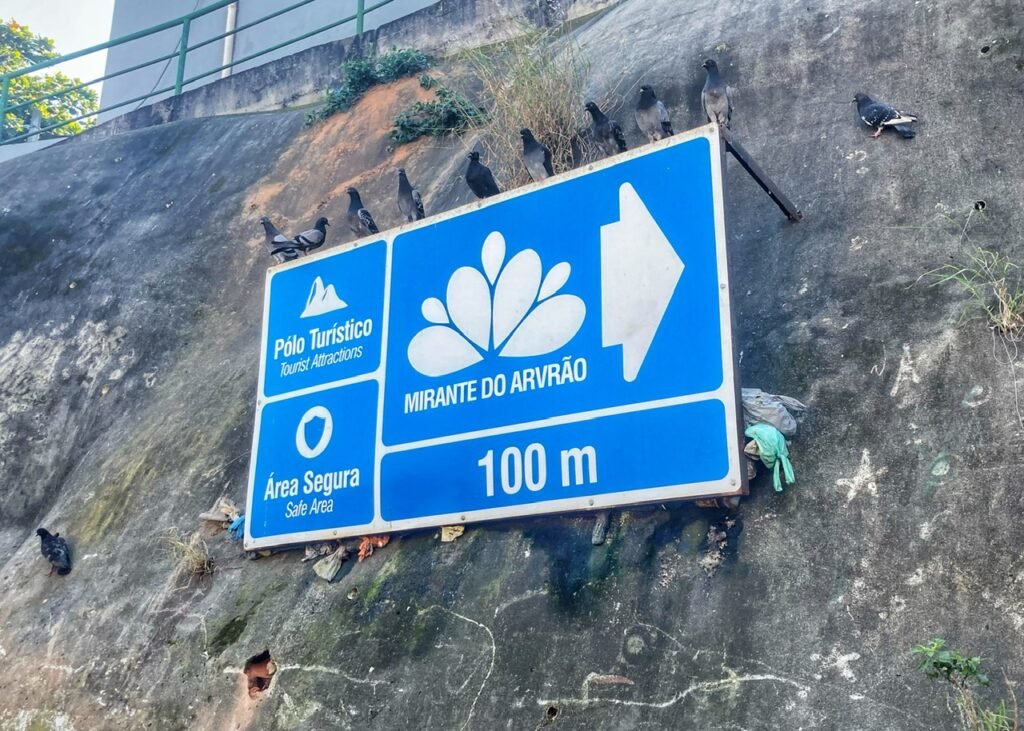
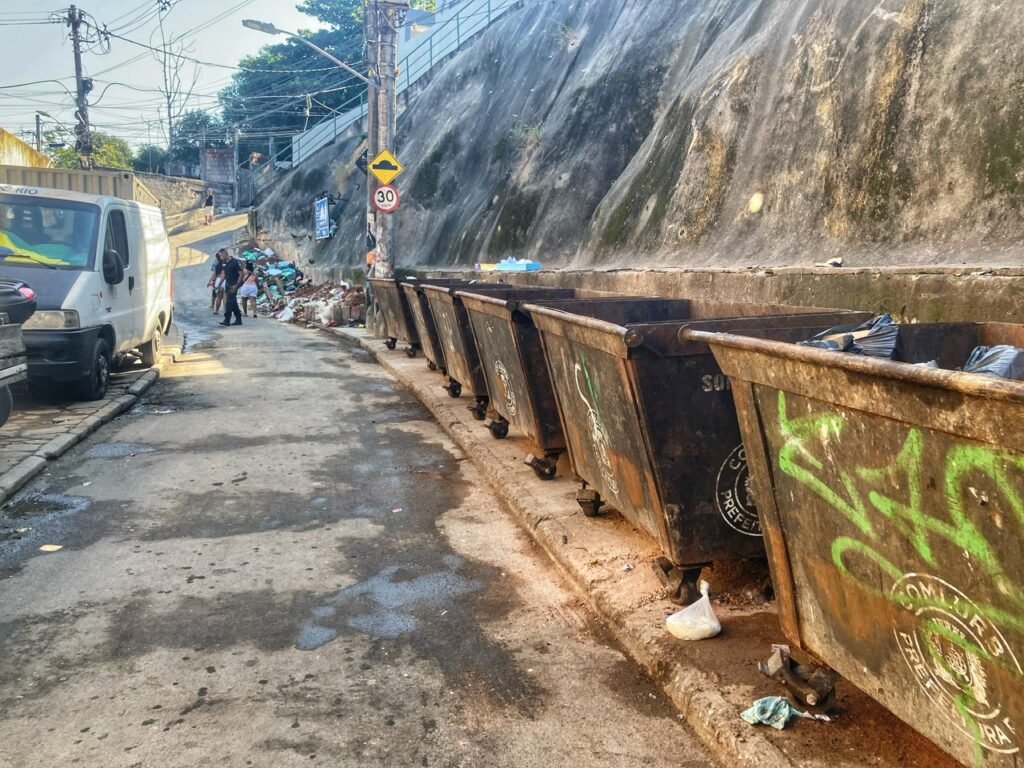
It was a little strange to be walking up the favela towards it, and then encounter this sign, and a police entourage. Then, as we inched by the dumpsters edging closer to the “tourist safe” area, a shuttle van, exclusively for the fancy bar, zipped by us filled with foreigners.
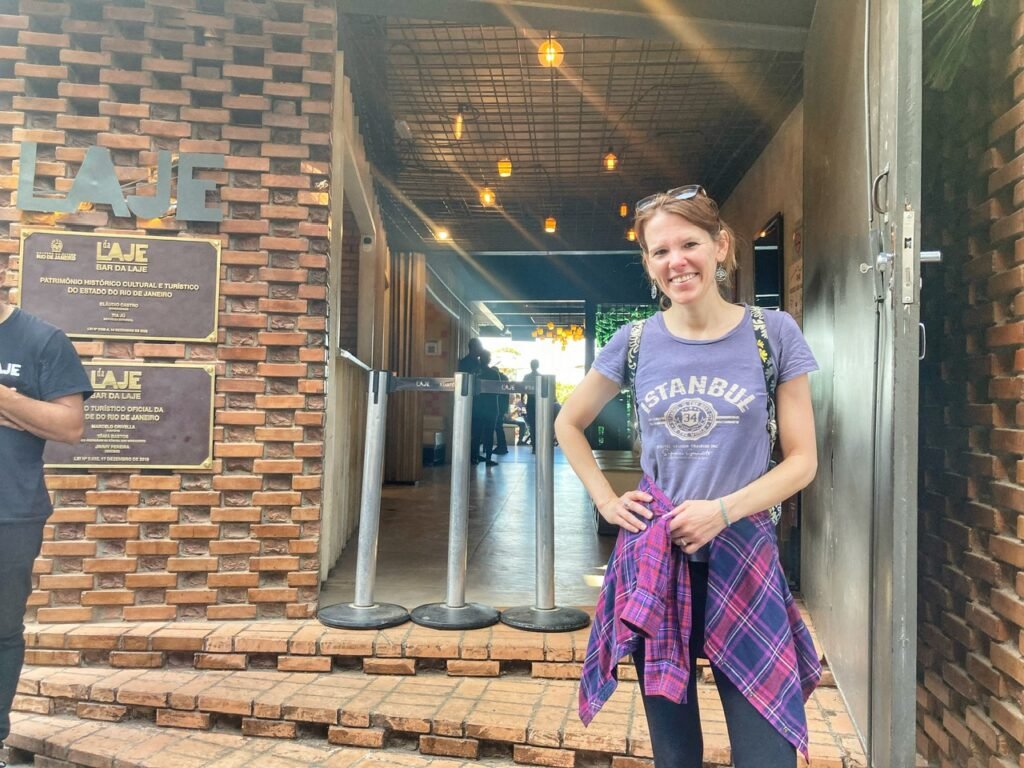
At the top, we arrived at Bar de Laje. It had three sexy bouncer ladies who said something to us in indecipherable Portuguese before we entered and found out, thanks to the English-speaking hostess, that it cost a whopping 100 ríales ($20) EACH just for the cover charge. The view, which they let us take a look at, was gorgeous but it was basically the same as the view we’d just had on the hike.
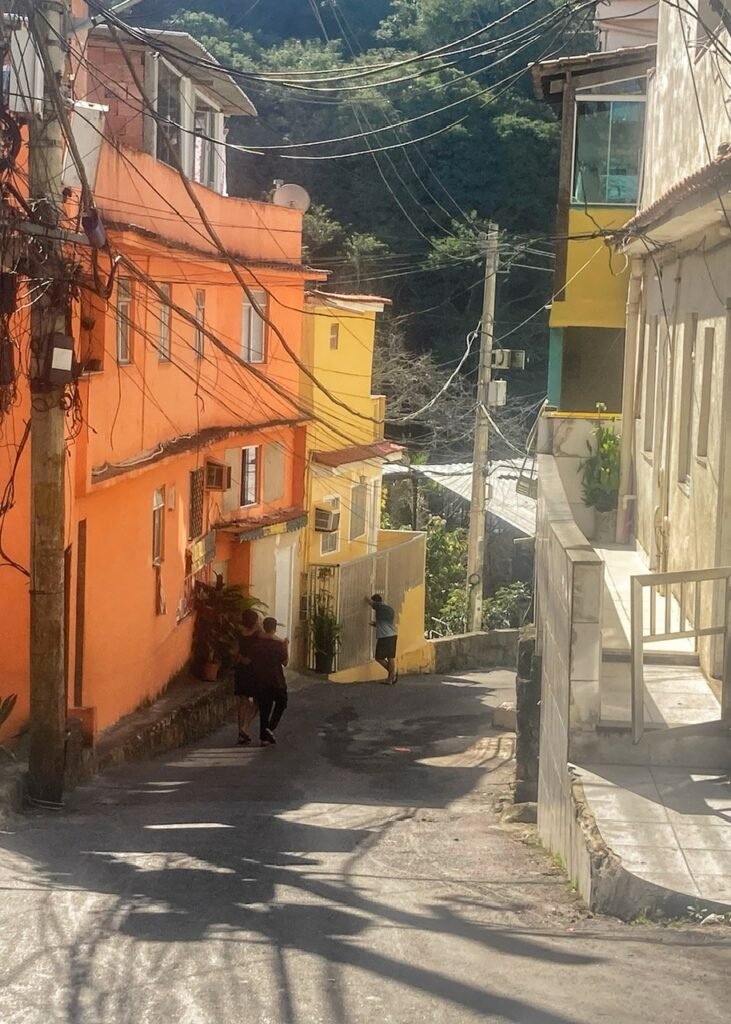
Thus, considering that completely laughable entry charge, we chose to plod back down, pausing to stuff some uber-cheap street food, Pão de Queijos, in our cheese ball holes.

As we walked back past the tourist barricades, we were still a bit shocked about the blatant gentrification happening in the small favela of 10,000 residents. Of all the favelas, Vidigal has the best views. It has become quite popular among tourists and locals from wealthy neighborhoods. Many foreigners have even bought houses here with rumors of one of them being David Beckham. Change can obviously be a good thing, but when it forces people out, not so much. Before its pacification in 2011, Vidigal was considered one of the most dangerous favelas in Rio because of the drug war and it was not uncommon to see regular shootouts between the special police forces (BOPE) and drug traffickers. (Rio travel .net)
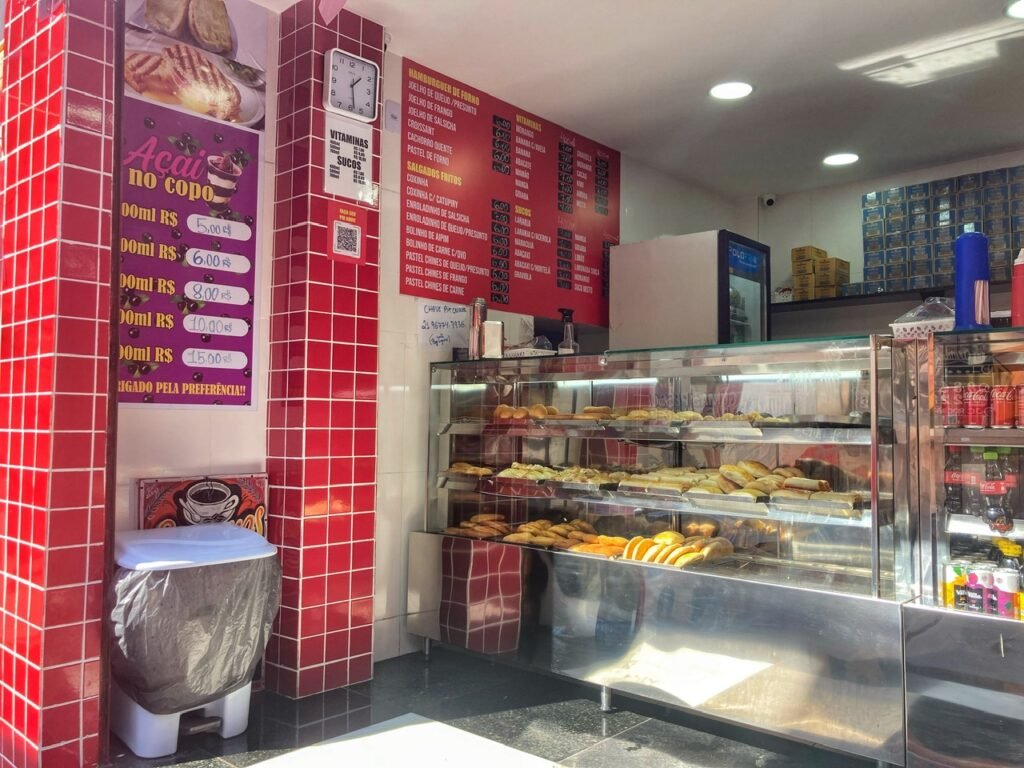
But at least the prices on açaí bowls were definitively cheaper than the ones in Copacabana.
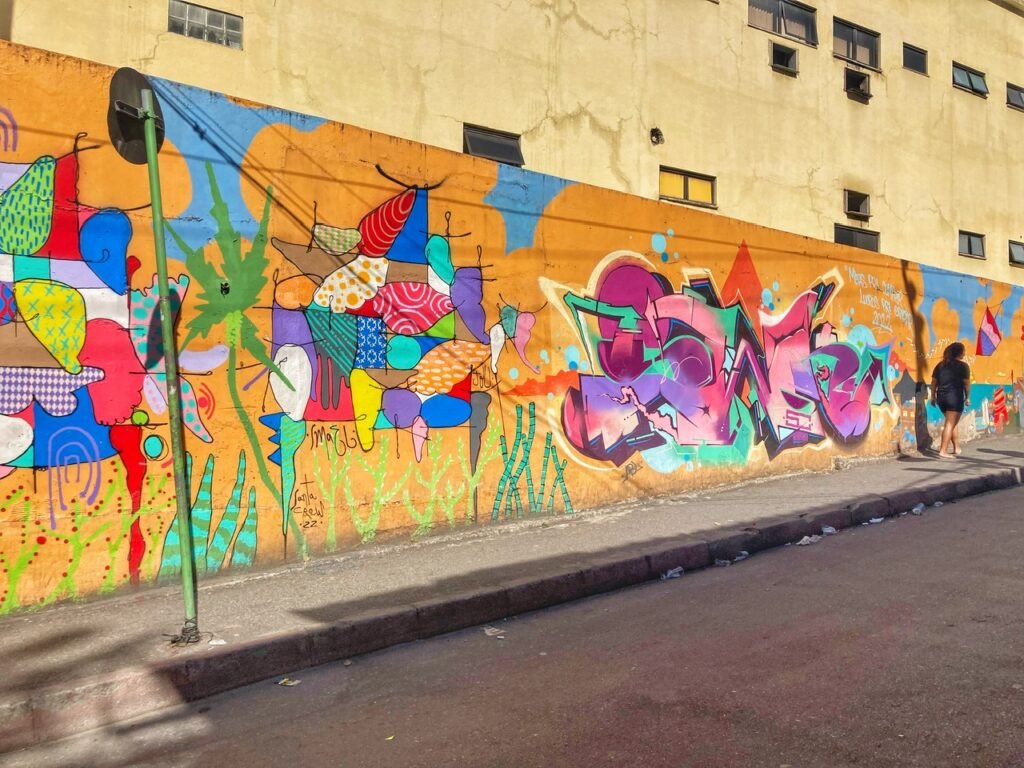
Street art in Vidigal is vivid and bright. The vibe reminded us a bit of some of the hillside comunas in Medellin (Colombia.)
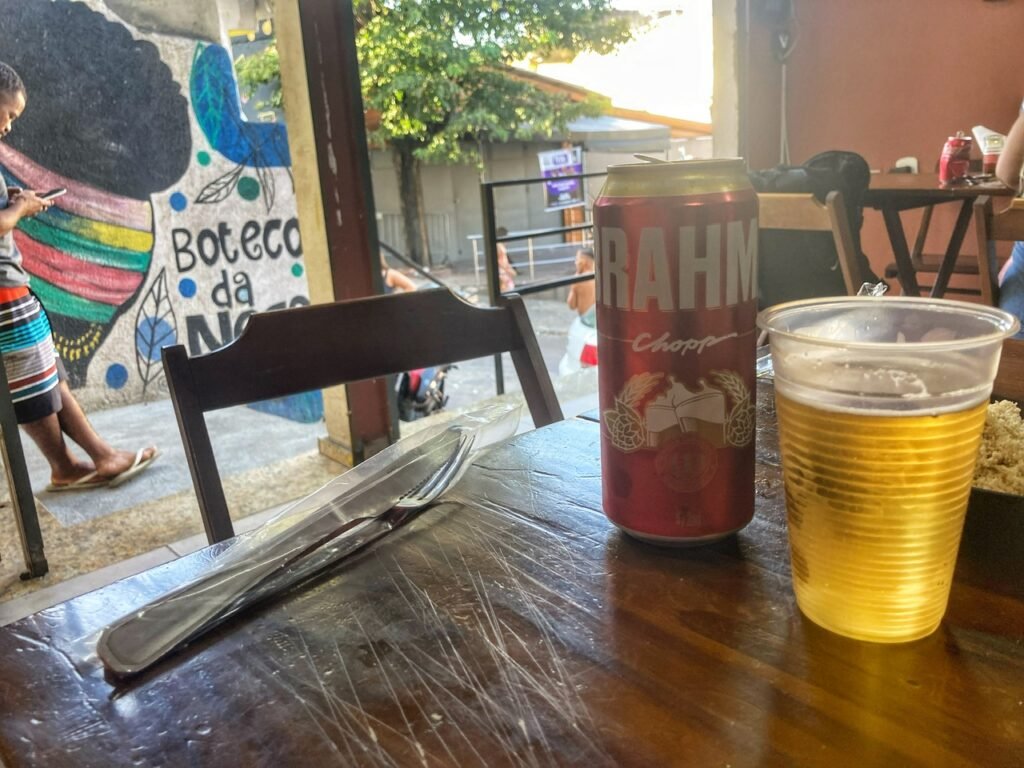
Grabbing a mandatory post-hike beer in a restaurant (with a complimentary entrance) near the entrance to the favela called Boteco da Nega. National Brahma beers are about $1 for a large can.
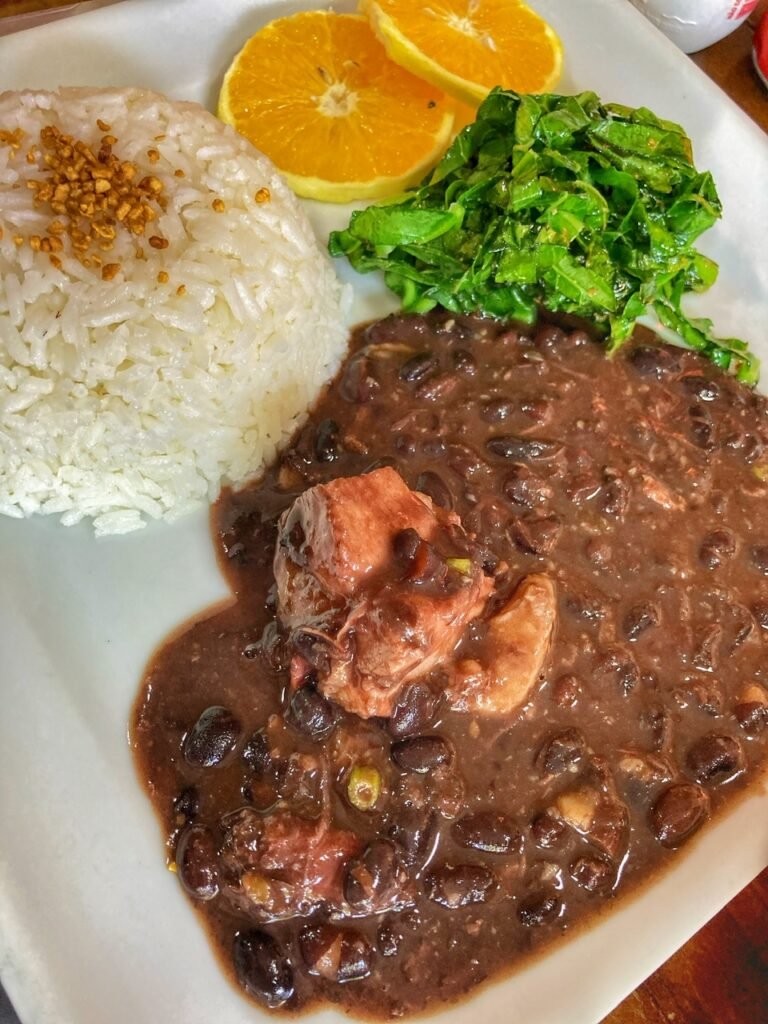
Greg also broke down and finally ordered Feijoada, Brazil’s national dish, which presented a real dilemma for bean-obsessed Mandy who doesn’t typically eat red meat.
Feijoada has an origin story tied to Brazil’s own history and was invented by African slaves, who used beans and cheap offcuts of pork, unwanted by their masters, to make this now iconic stew. The stew is best prepared over low heat in a thick clay pot. Today, it is considered a celebratory dish eaten on Saturdays or Sunday afternoons. It was delicious, although we have a feeling we were presented with the foreign price of 50 ríales or over $10.
Pico da Tijuca Hike

We had been eyeballing the Pico da Tijuca hike for several years so we knew we couldn’t depart Rio de Janiero without scaling the vertigo-inducing precipitous stairs and absorbing the most mind-blowing panorama we’ve ever seen of a city. And…we had it all to ourselves on this particular Monday.
Tijuca Peak, the highest peak within one of the largest metropolitan rain-forests in the world and it is part of Tijuca National Park. It is located about an hour northwest of Copacabana and is free to visitors. It offers loads of hiking trails, caves, waterfalls, and sheer natural beauty and was one of our favorite places we went while in Rio. It’s most known for Instagrammy showpiece stone steps at the end of the Pico de Tijuca hike.

The 1.5-hour trail that takes you to the top of the peak is one of the oldest, built almost 100 years ago. In this section, there is a ladder of 117 steps carved into the stone.
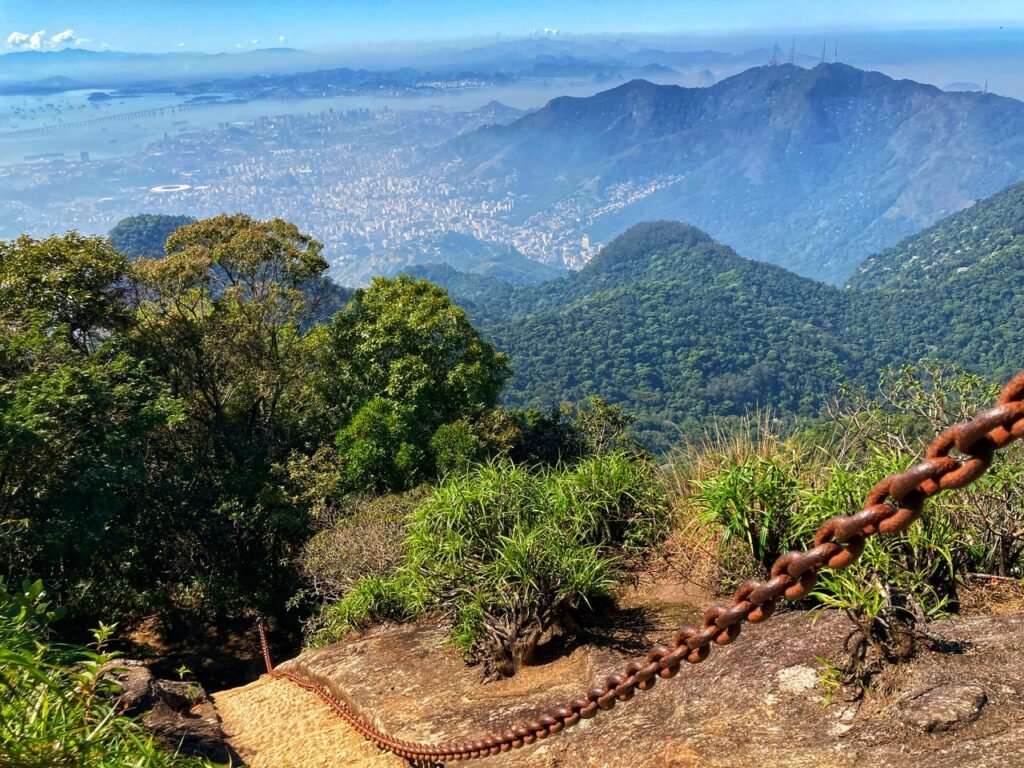
It is designated as a “challenging” trail but we felt that was a bit of an overrated rating. Until you get to the stairs, the hike is a slow and gradual ascent. But it would definitely be a great trail to help resolve any fear of heights!
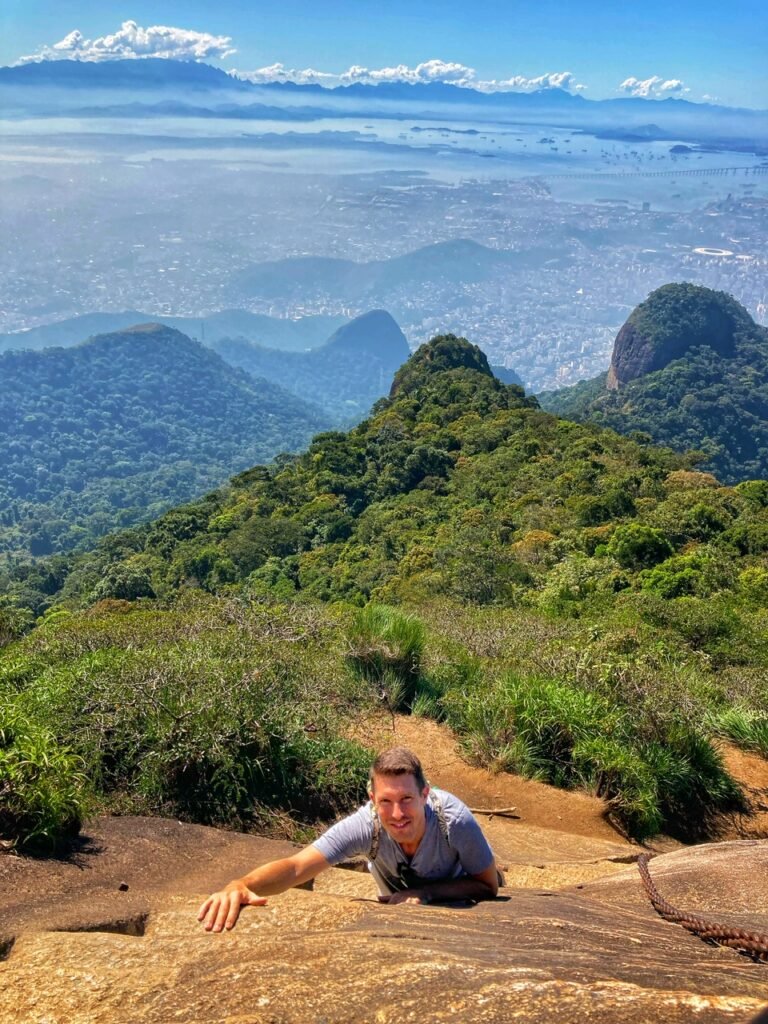
Greg, who gets a little vertigo, dramatically clings to the rock stairs. In reality, he did just fine.
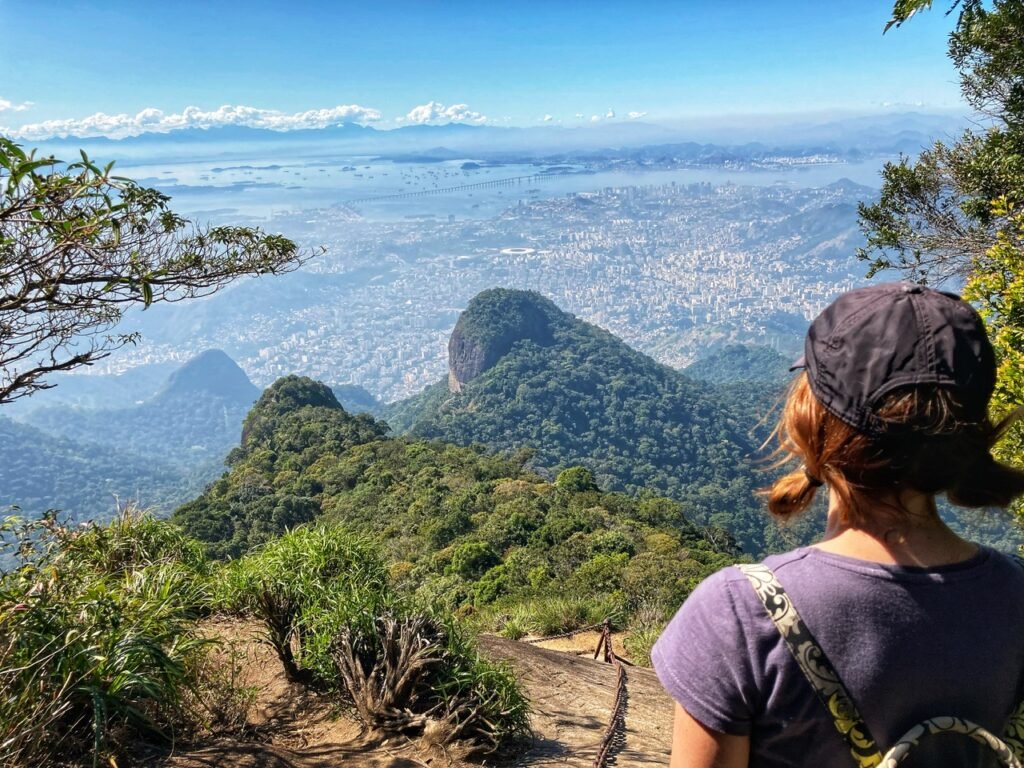
When you STOP, turn around, and get to soak in this view, EVERYTHING is worthwhile.
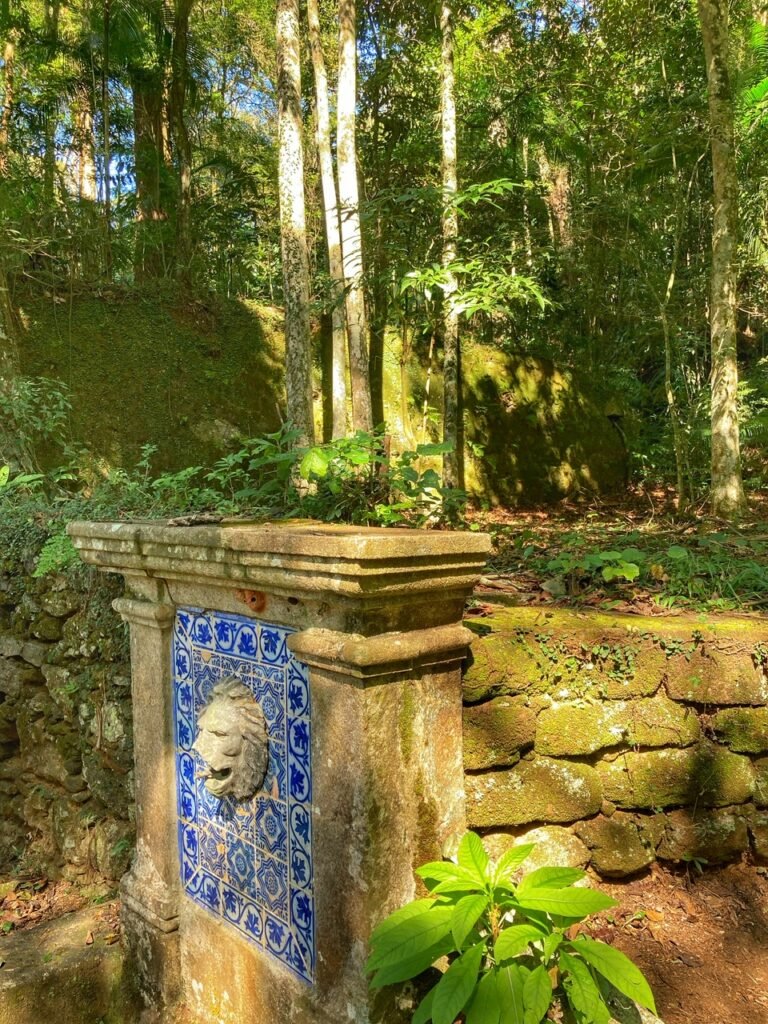
So, how did we find ourselves on top of this mountain? We took the orange/yellow metro line to the end at Jardín Oceanico ($1.40) and called a cab using the 99 taxi app to drop us way up to the visitor’s center in the park. This cost 25 ríales or $5.25. However, we’d recommend being dropped at the “Bom Retiró” picnic area which is the actual trailhead. To get back down, we walked back the hill to the exit and hopped on Bus 301, 302 or 645 back to Jardín Oceanico for $.80. Buses take cash or metro cards, but not credit cards like the metro.
Anyhow, we did get dropped at the trailhead so we had to walk uphill about a kilometer first. But we got to see some “ruins” along the way. I think we’ve spent too much time in the Middle East/Europe because we weren’t too impressed.
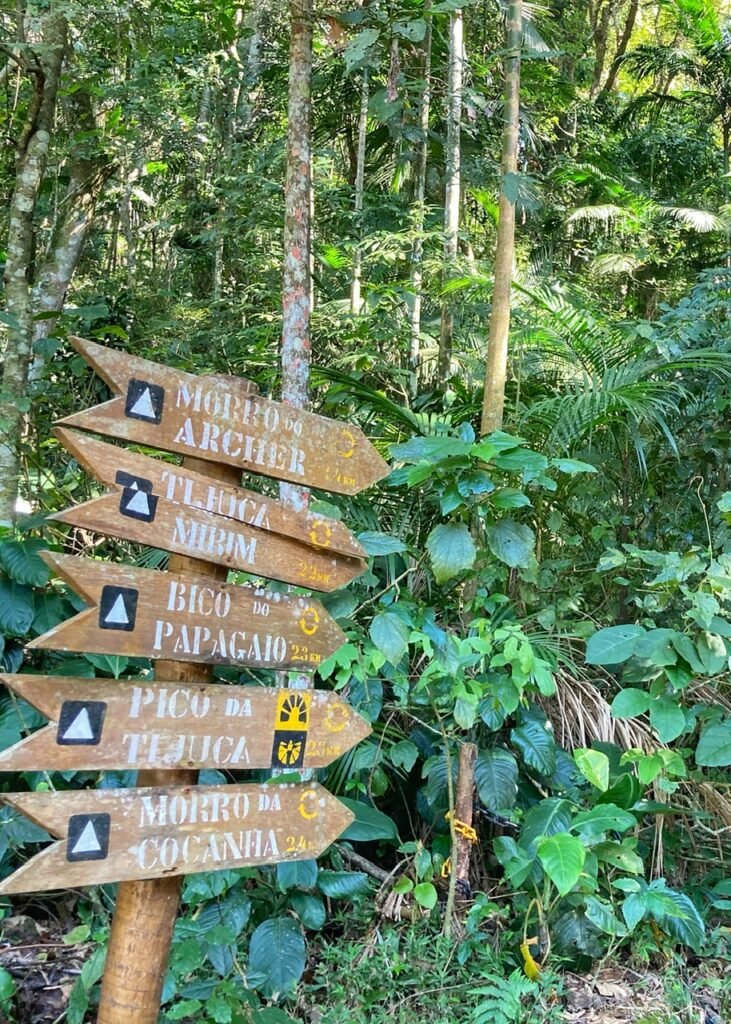
The whole park was conveniently signed.
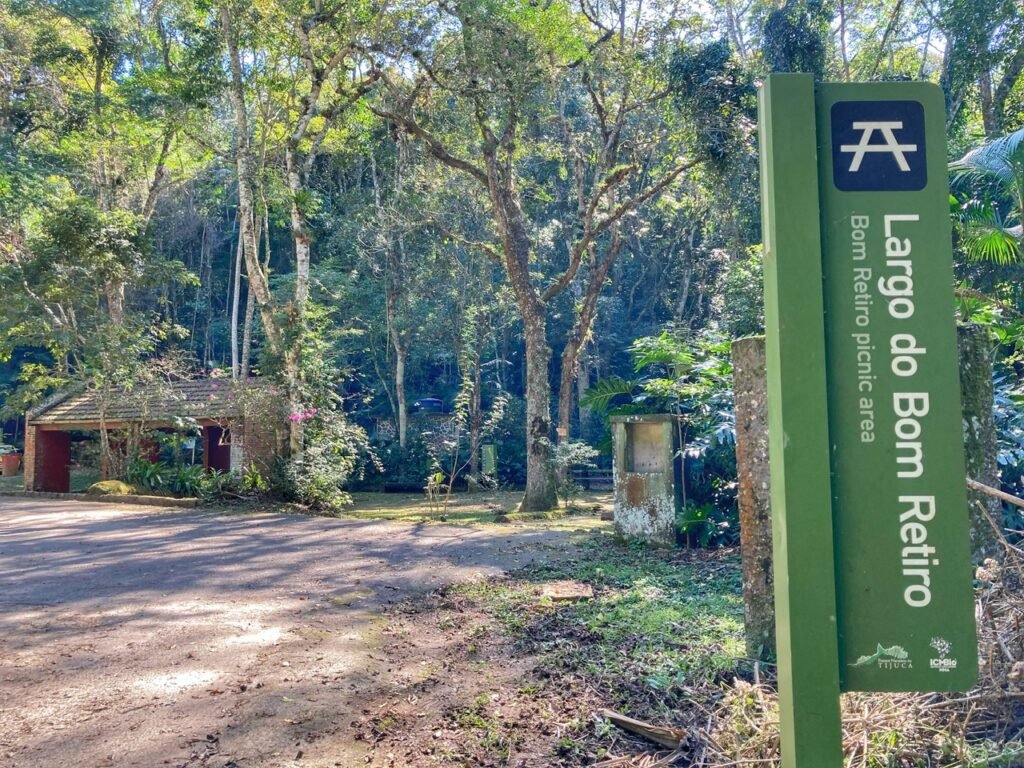
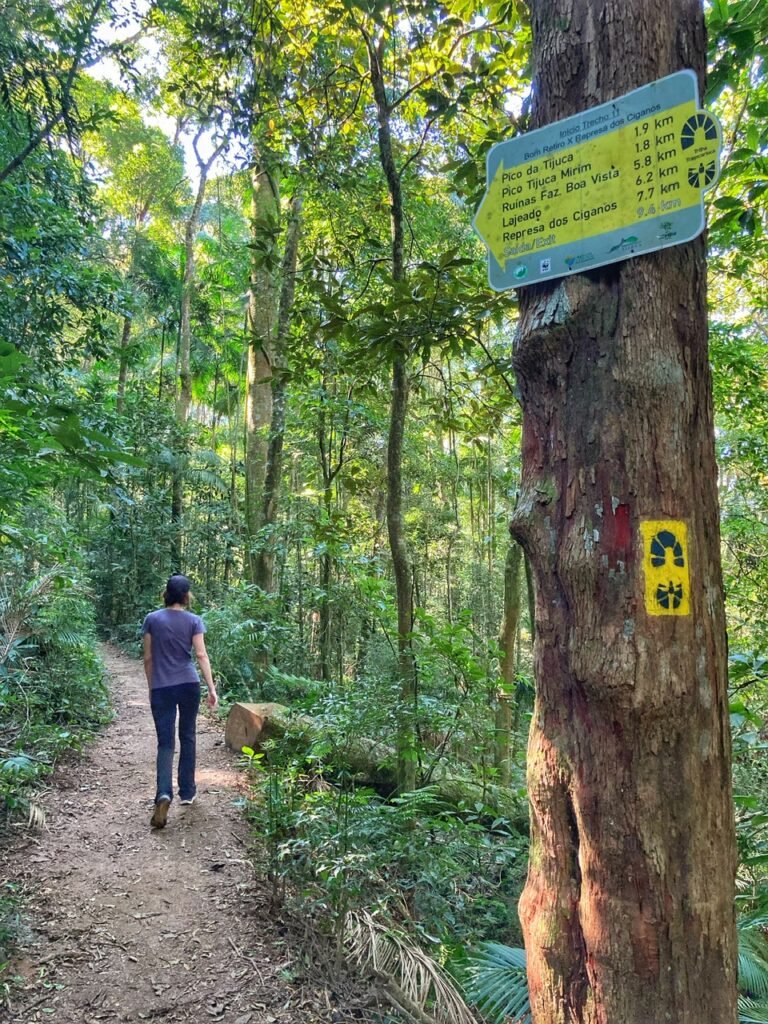
When you actually make it to the trailhead it’s only a 1.9-kilometer jaunt to the peak. It felt so amazing to be alone on this beautiful trail. The environment is apparently a rarity in this country. Heartbreakingly, Brazil has decimated 90% of its Atlantic forests, but this park has been well-protected for over a hundred years.
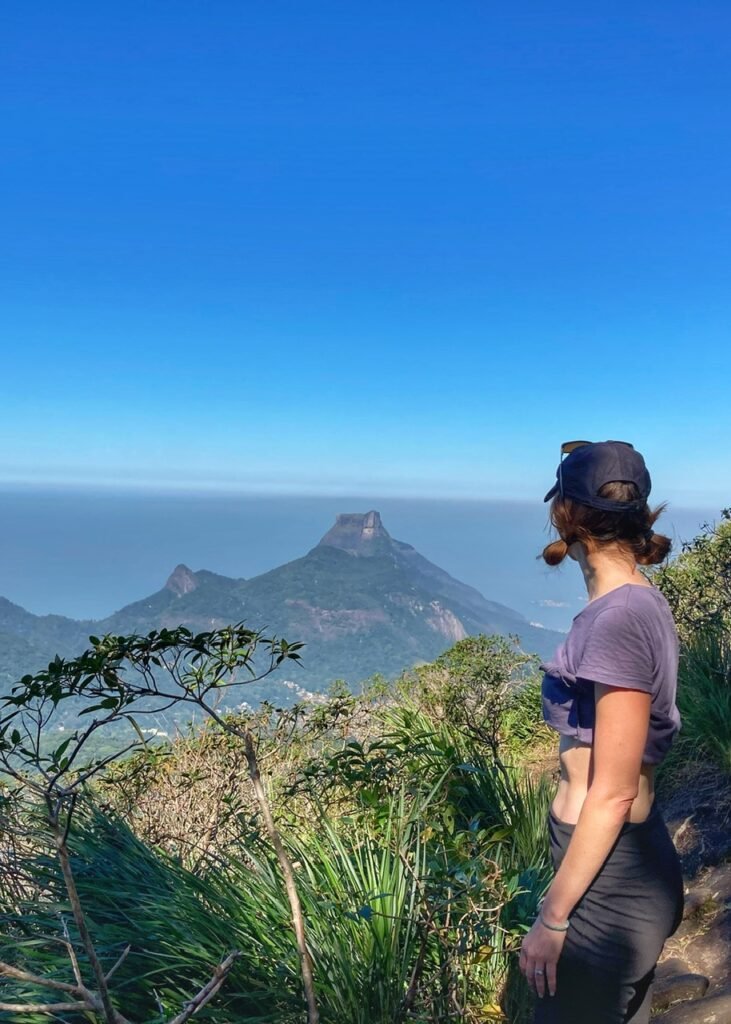
We definitely broke a good sweat heading up as we winded through the forest and our first peek of a peak was incredibly gratifying. This is Gavea Peak, another trail we really wanted to hike but you needed ropes for. Alternatively, many people do Pedra Bonita which is easier and also has wonderful views.
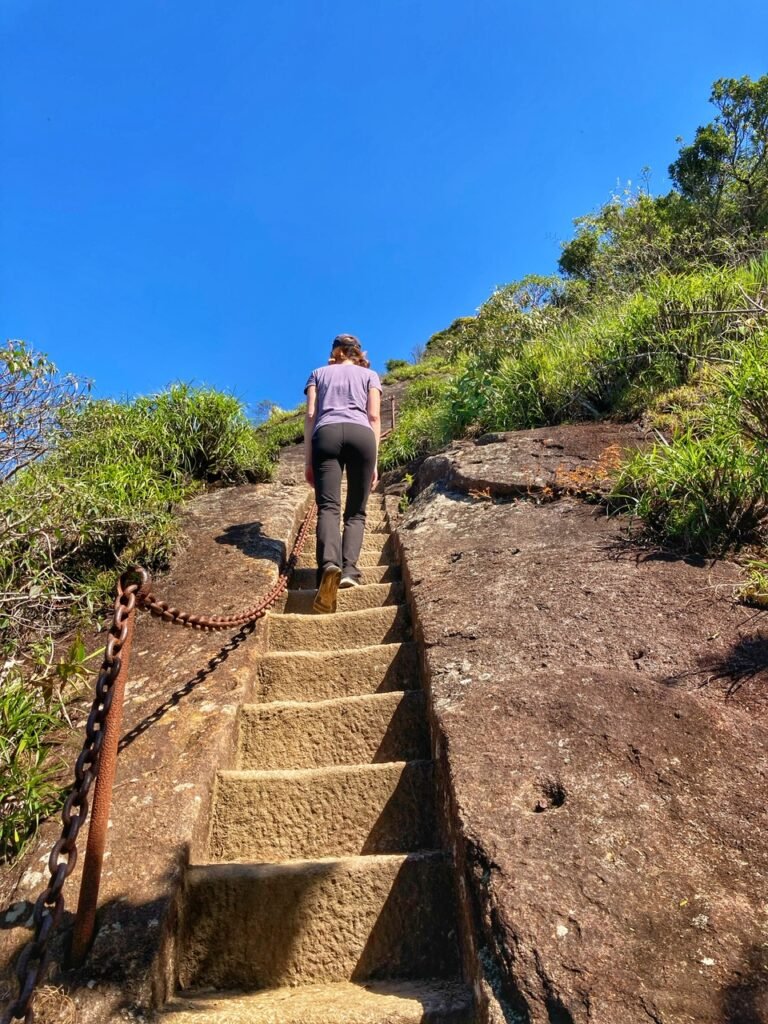

Arriving to the steps, Mandy bounded up them with excitement. There is a chain railing along the length of the stairs but it definitely needs to be fixed in many places.


Catching our first glimpses of the city and the layer of haze that blankets it. Rio is designated as moderately polluted.
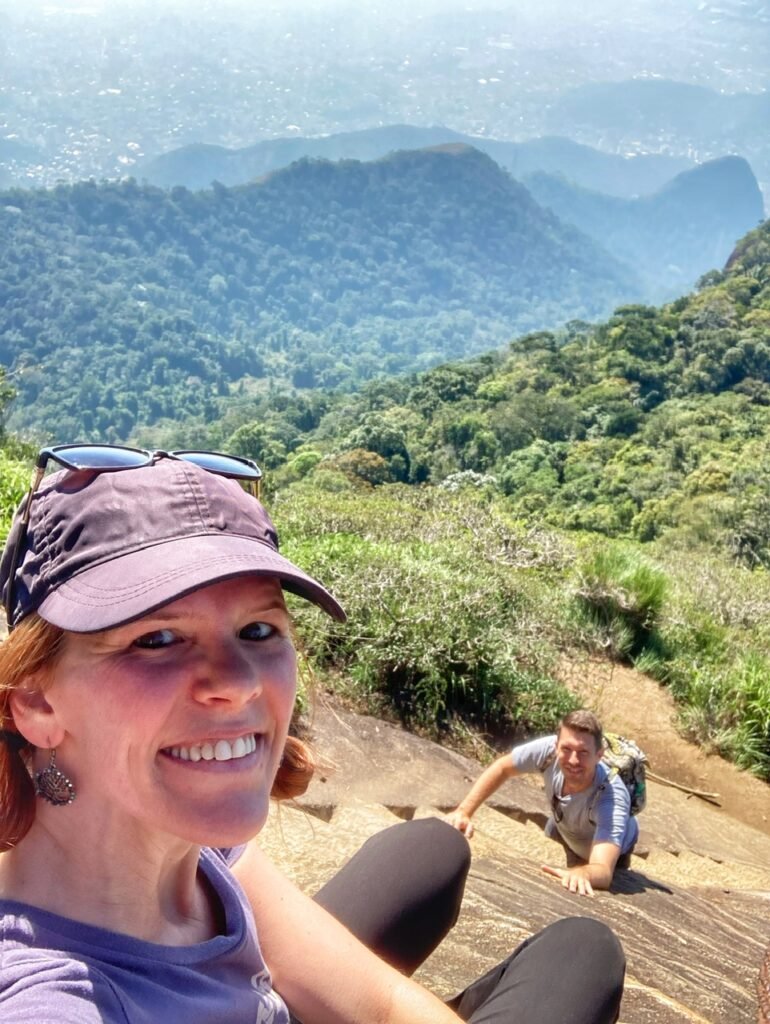
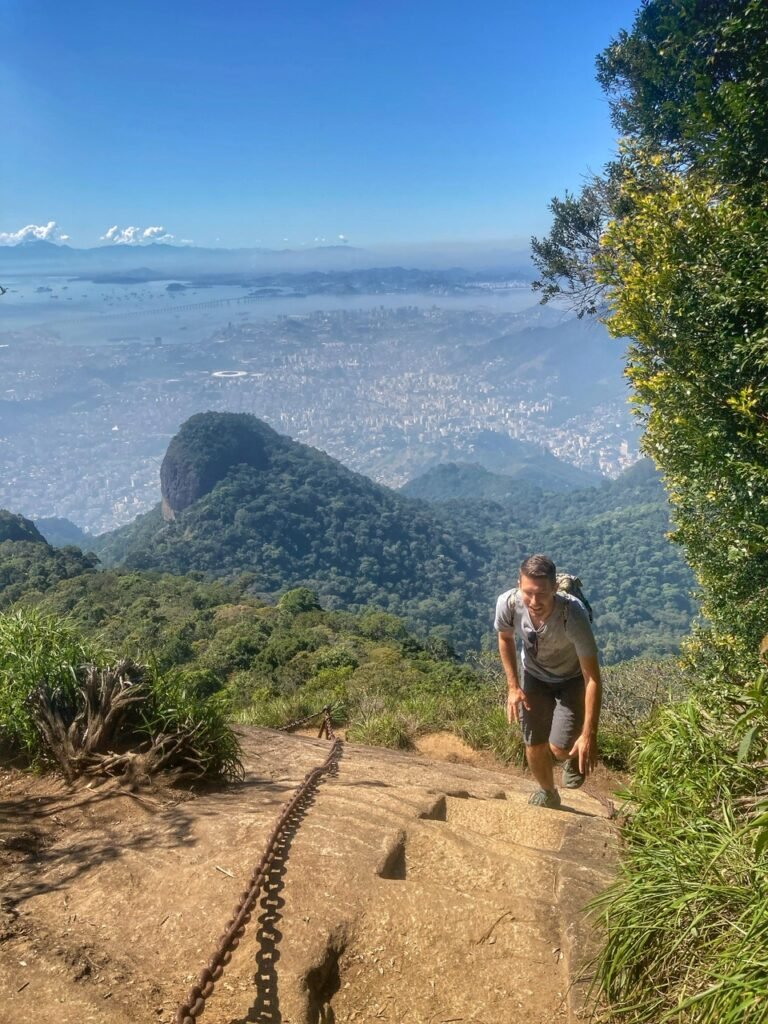
Mandy waiting for her timid of heights buddy to catch up. He’s got it. No pain, no gain! Worth it every time!

The intoxicating view at the top of the stairs. From here, you can truly see everything.
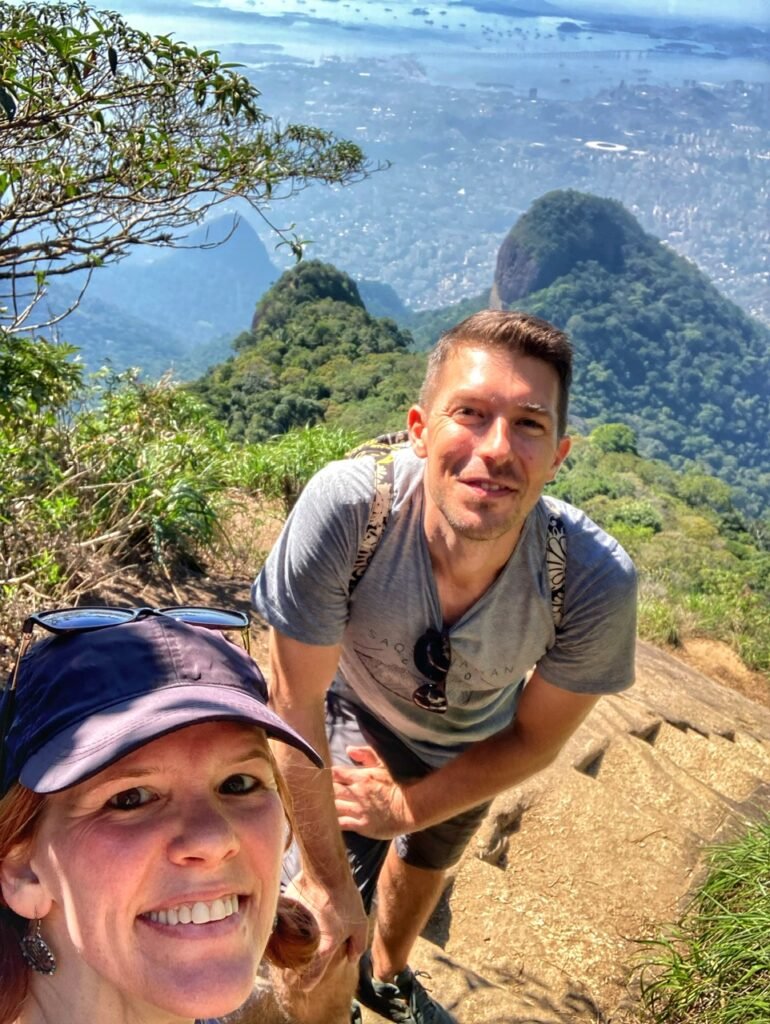
We did it!! 1021 meters (3349 feet!)
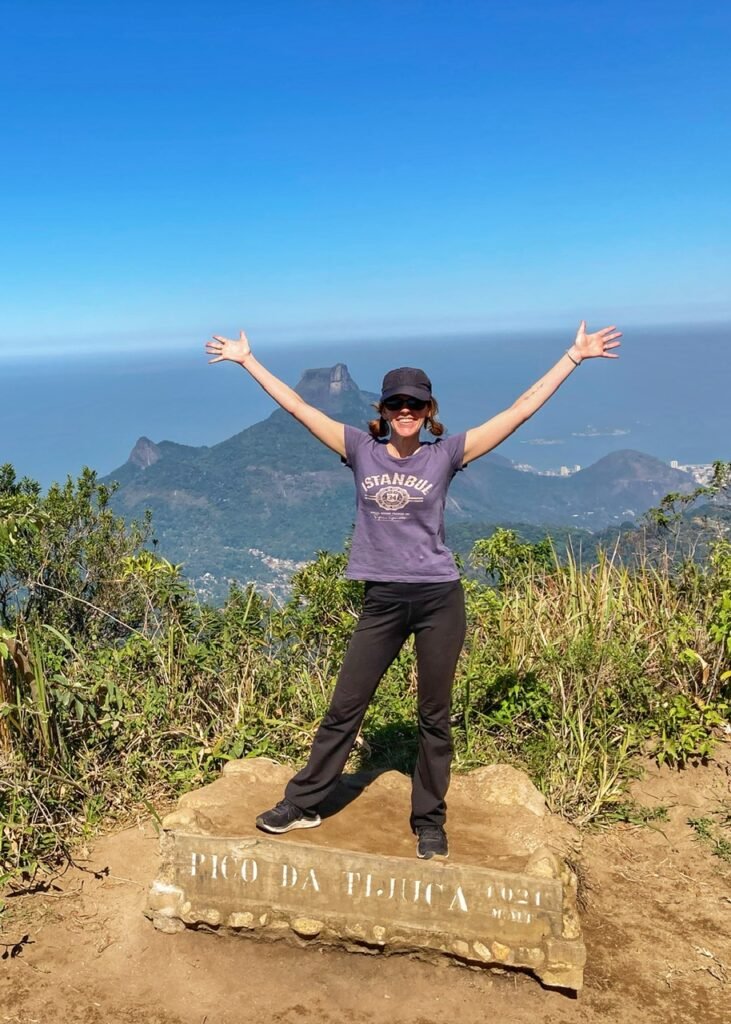
Ooo!! And there’s even an official Olympic-worthy platform to pounce on!

After basking in the views and enjoying our picnic lunch…Oompf….
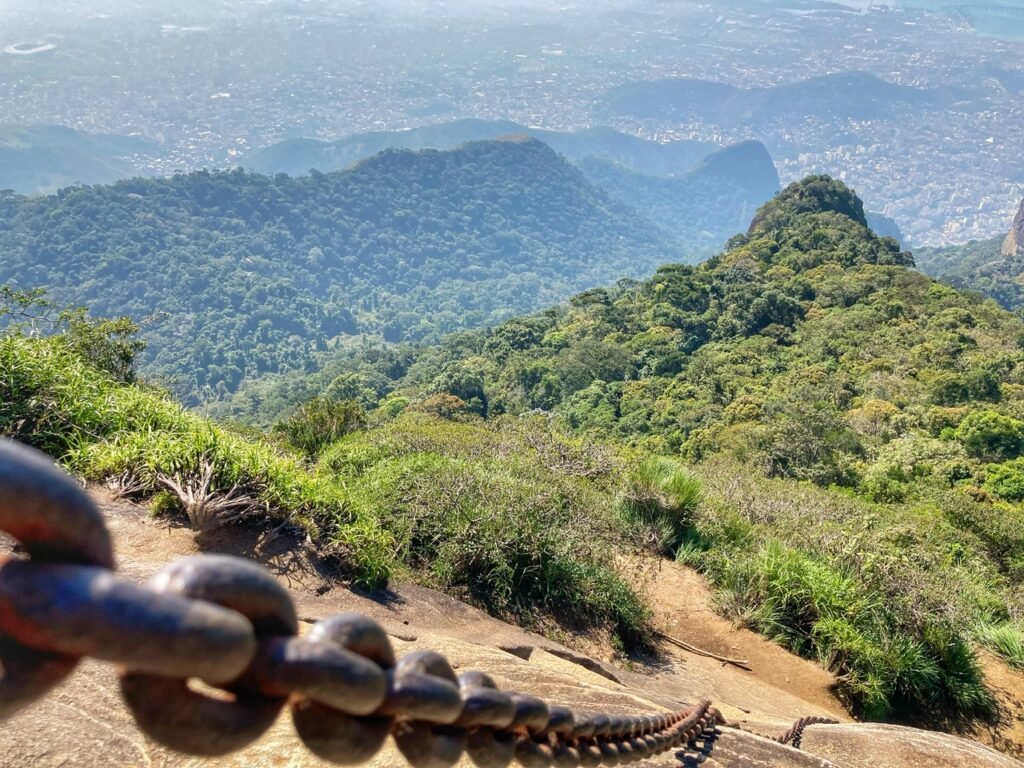
…Now comes the hard part. Heading down isn’t so bad as long as you keep your eyes on the stairs ahead of you the whole time!
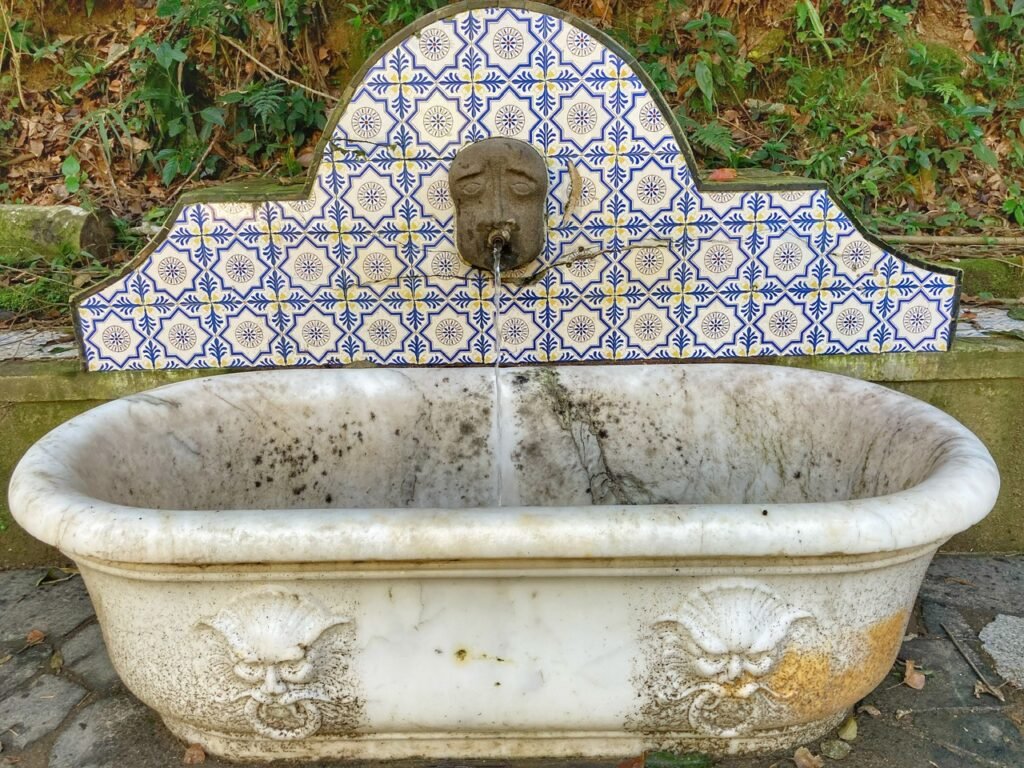
Once you’ve rolled yourself off the mountain, rest assured that a water bottle refill station, in a pretty marble and tile tub, will be awaiting you. These are spread throughout the park.

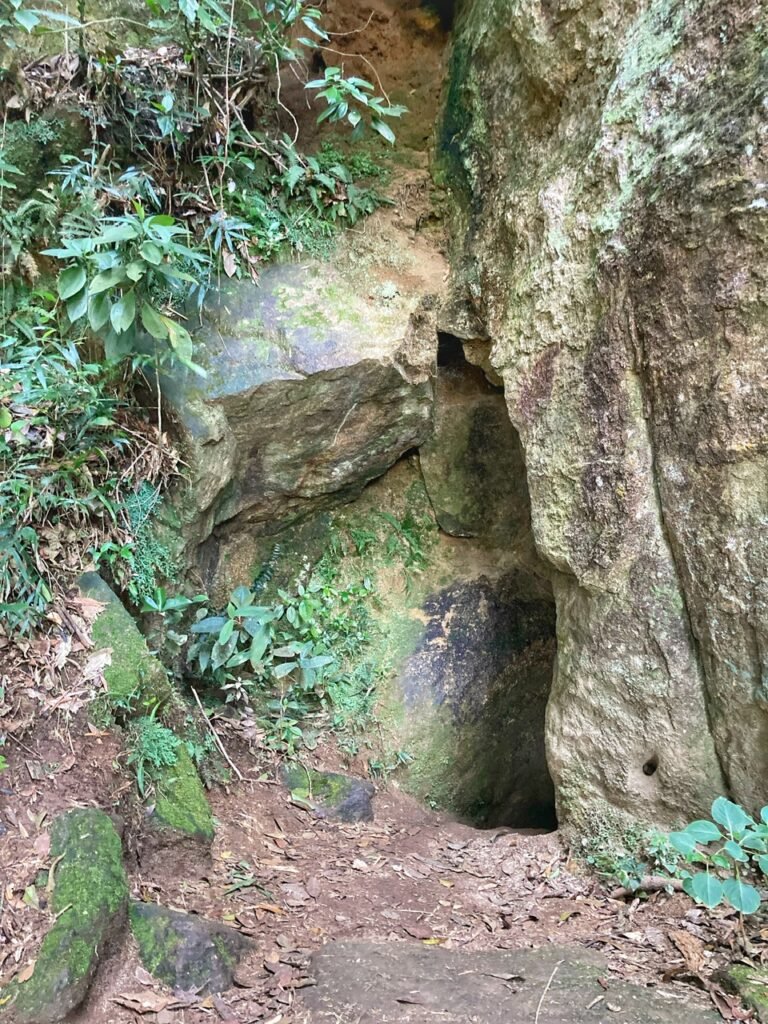
After the peak, it was off for some easier exploration. This included caves…
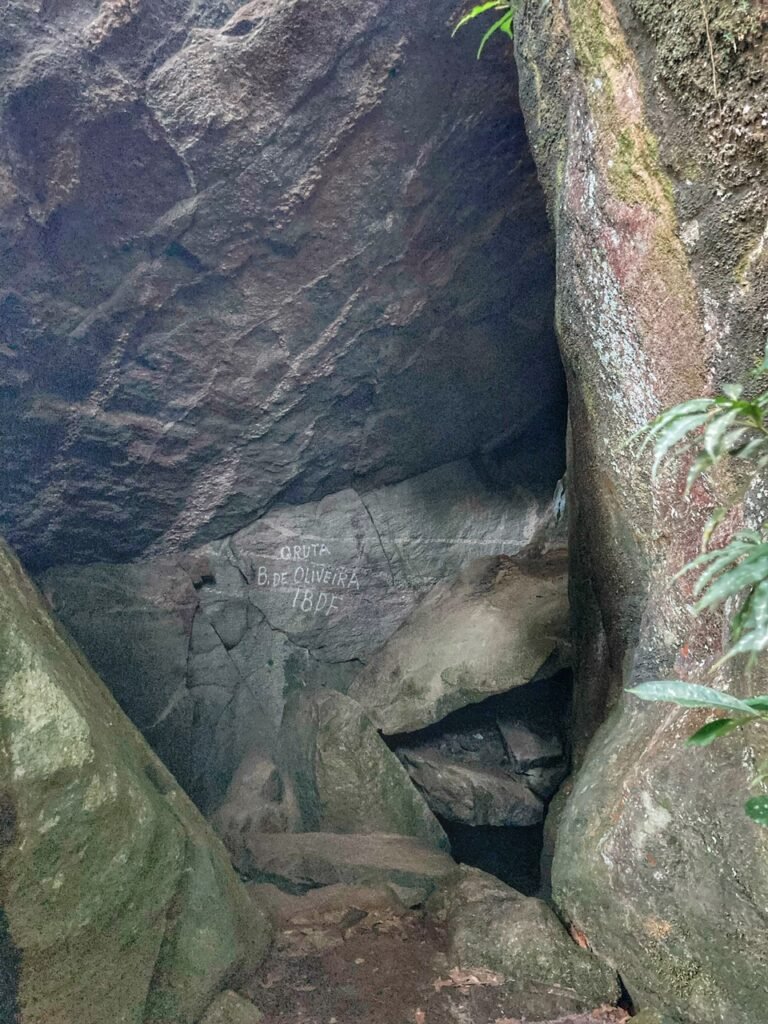
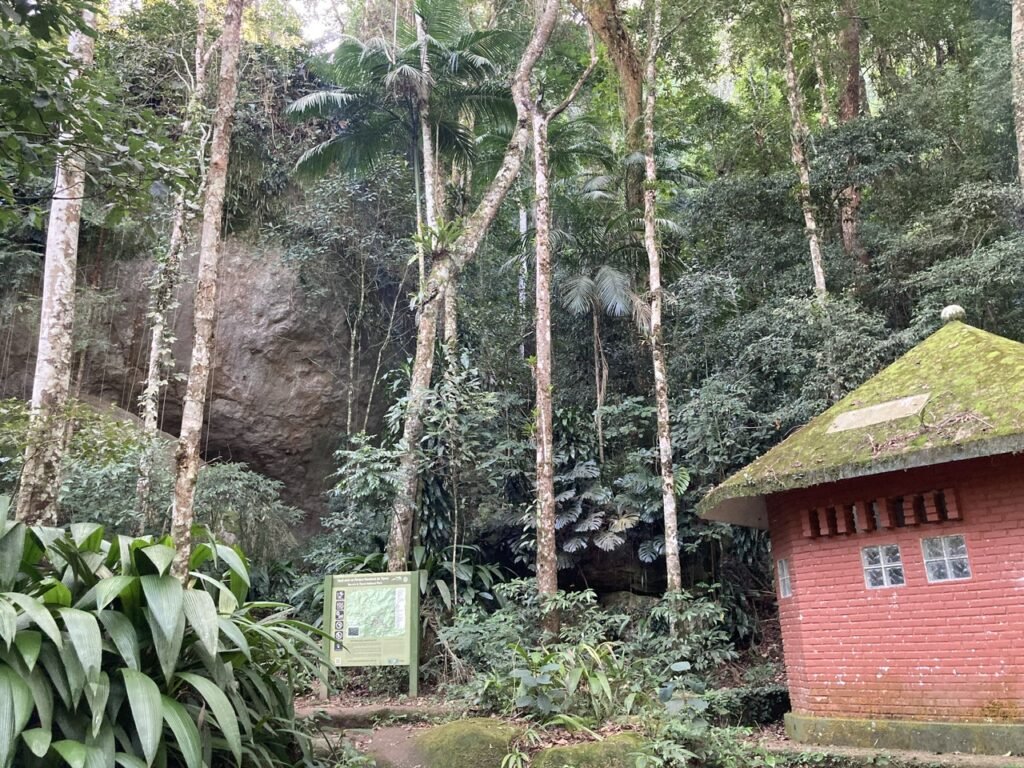
Various holes, more lush forest…
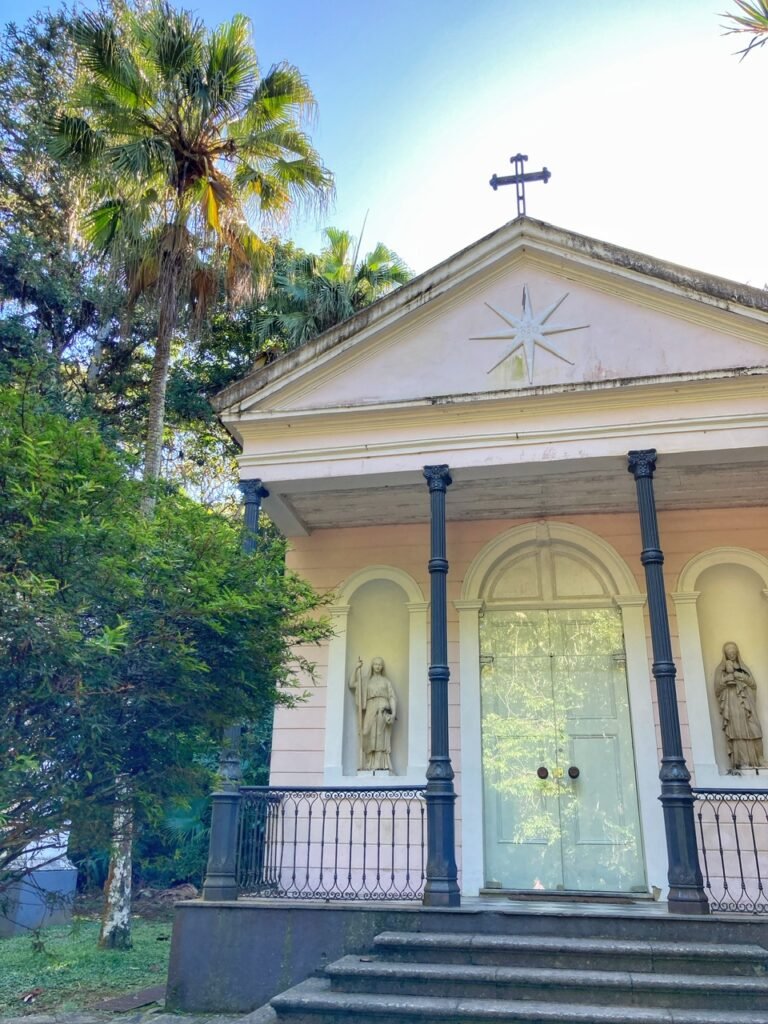
…and even a park church. Because we can’t seem to ever go anywhere without one.
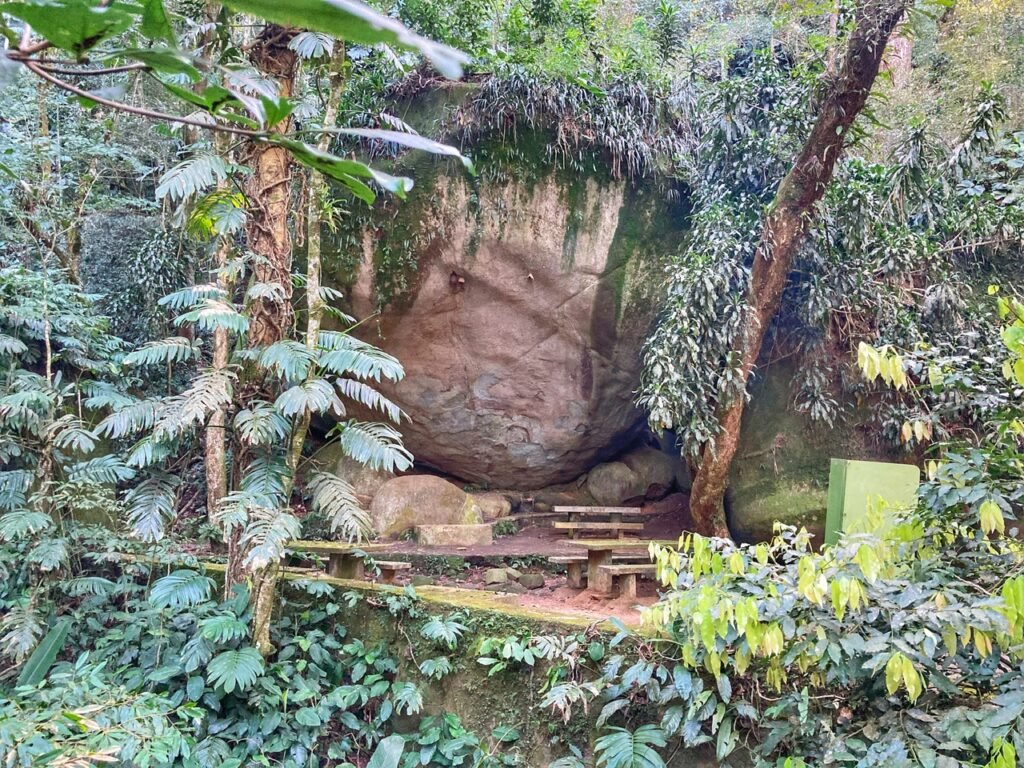
Lots of picnic areas are scattered throughout the park. Interestingly, we didn’t see any options for camping, however. Not sure they do that in Brazil.
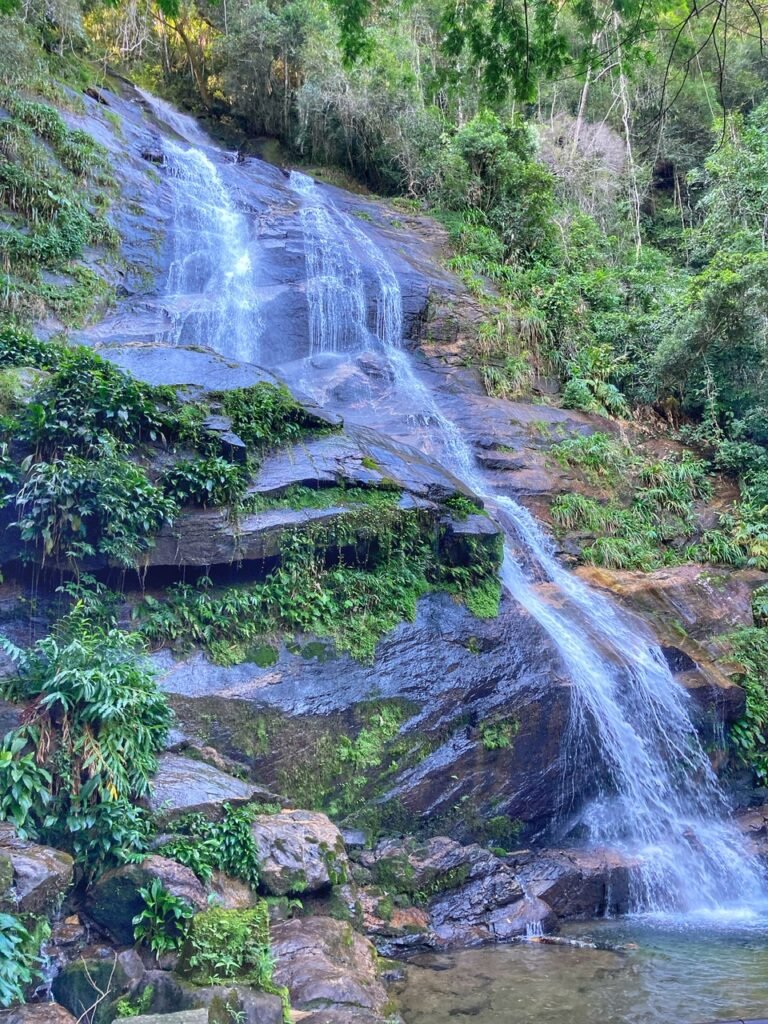
And of the thirty waterfalls that exist in the park, we found two! 🤣
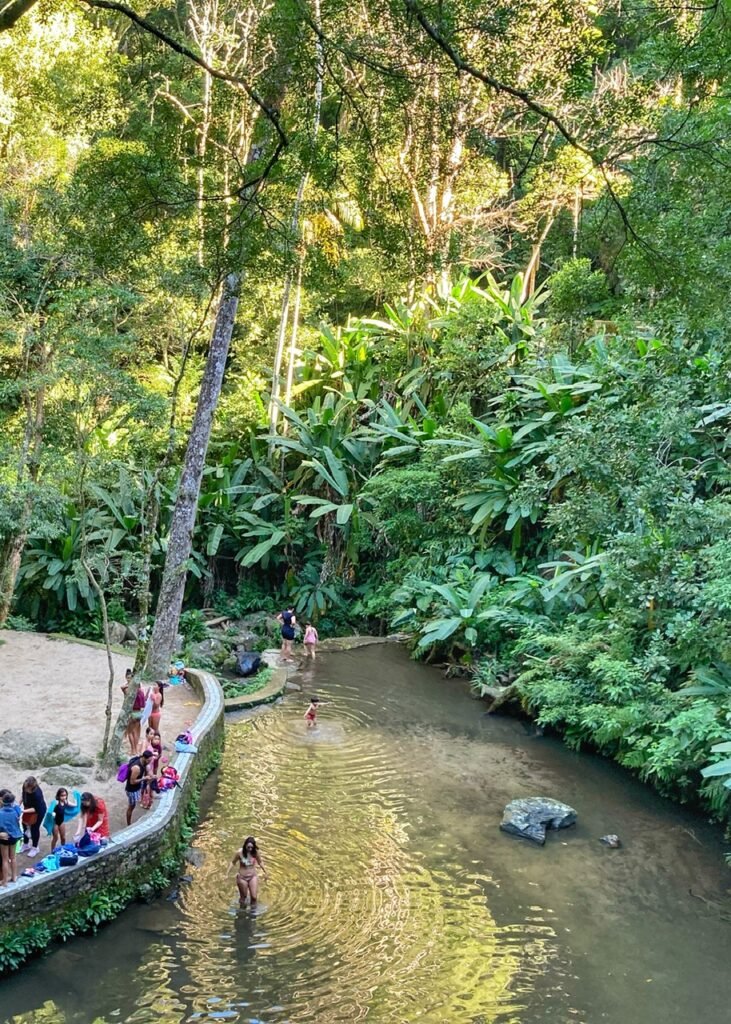
And a very nice swimming hole. Ah! That’s where everyone is.
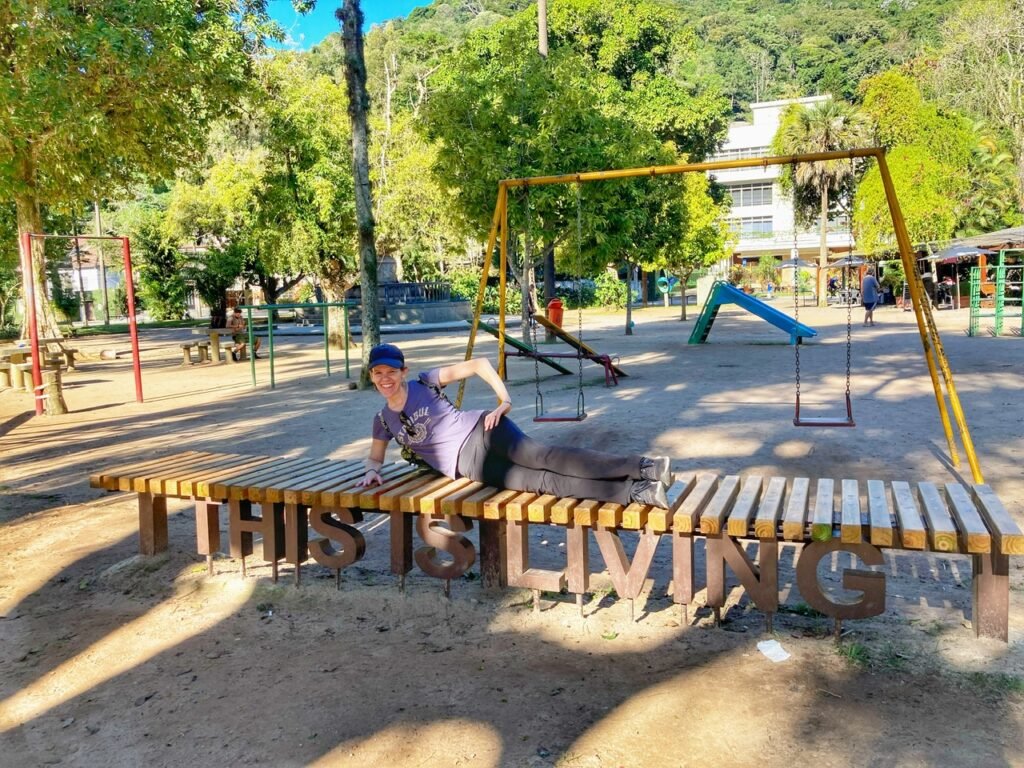
Mandy tries on this bench she wholeheartedly agrees with, conveniently in English for all of our reading pleasure!
Parque Lage

Because the entire city of Rio is blanketed in remarkable landscapes, we expected their city parks to be equally fetching. But we didn’t expect them to be a rainforest version of Alice in Wonderland meets Hobbit meets Jungle Book. Parque Lage, also referred to as Rio’s “Poor Man’s Botanical Garden”, (it’s free) is packed with curiosities from waterfalls, a mini aquarium, a natural cave system, and the ruins of a turreted castle which meld perfectly with the surroundings. Oh, and there are toupeed monkeys that seem to have taken their lessons from the ones in India. In other words…they WILL come after you if you have food. 🤣
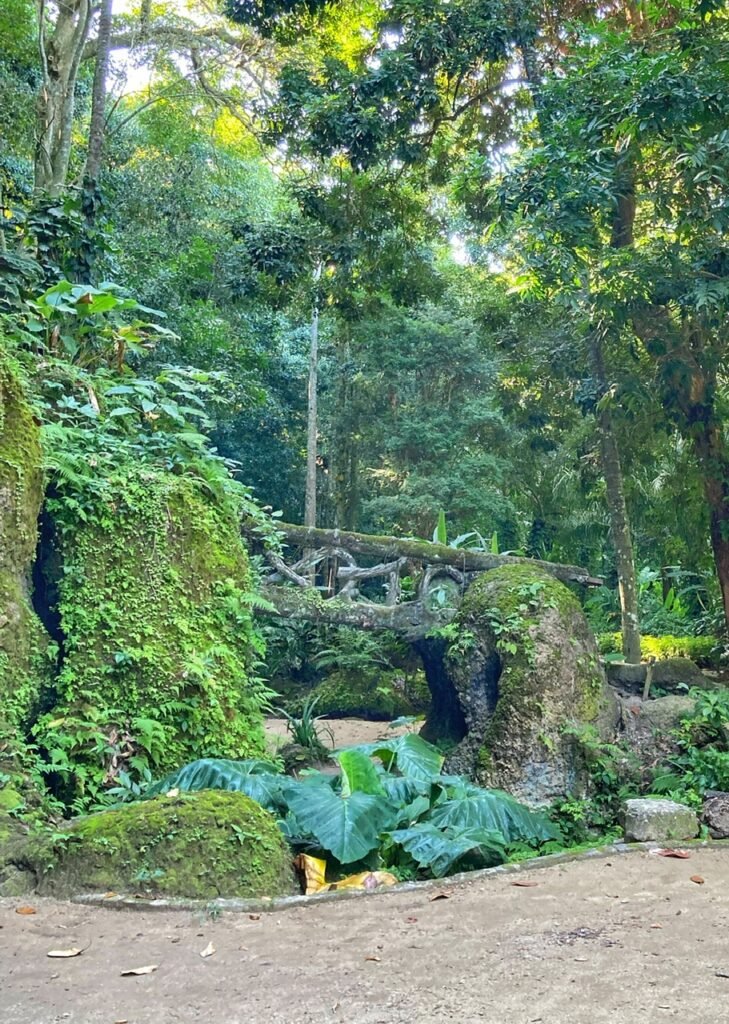
Parque Lage is nestled at the foot of Mount Corcovado, where Christ the Redeemer is perched, and seemed to be relatively off the beaten tourist path, despite its appearance in music videos by Snoop Dogg and the Black Eyed Peas. It is loaded with fun surprises like the ruins of a long-lost castle tower, some gnarled storybook bridges…
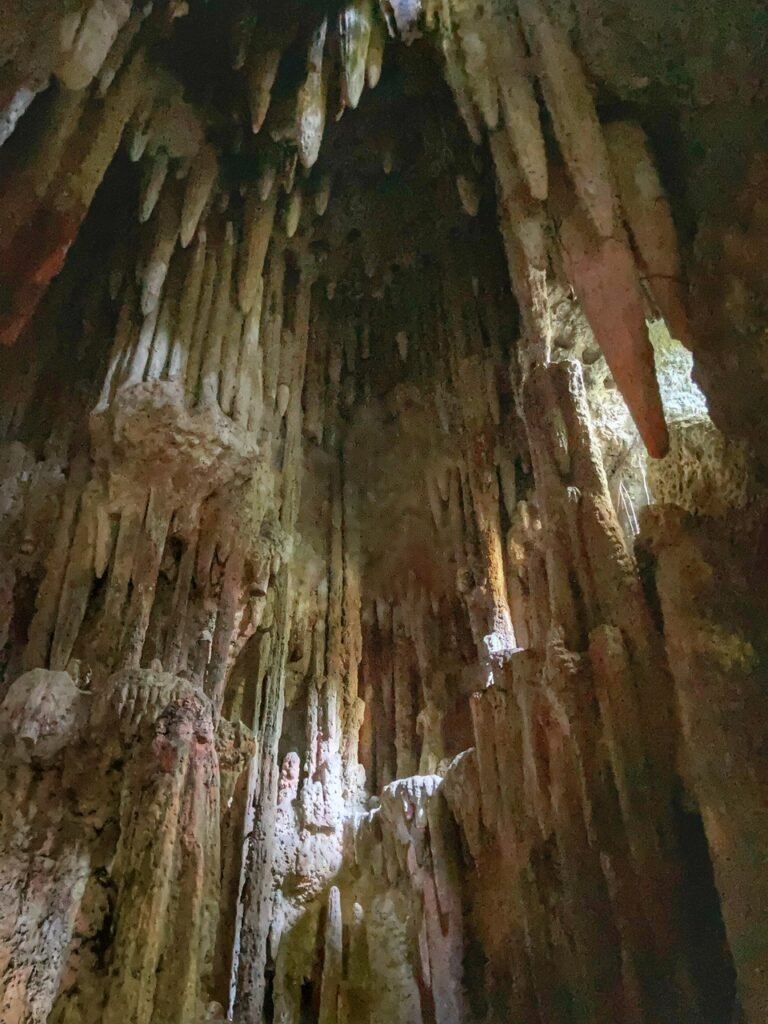

…a grotto draped in stalactites, and other secrets around every bend.
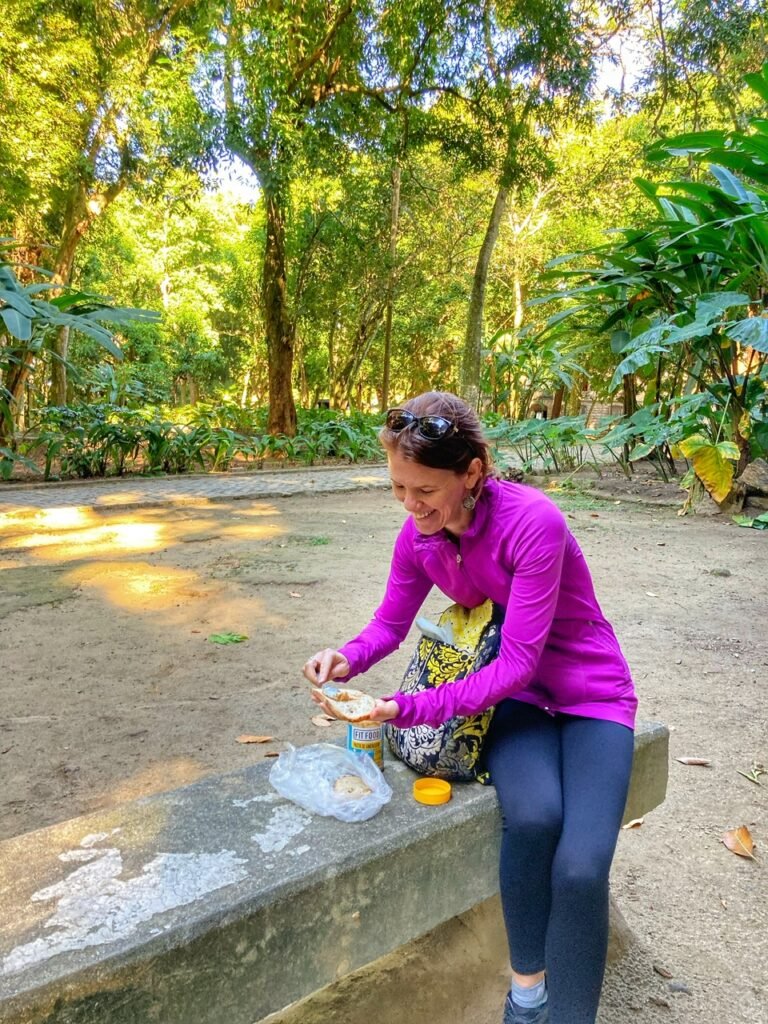
We arrived at the park after our visit to Christ the Redeemer and the first order of business at 9 am was feeding our growling stomachs. Naturally, Mandy was ready to whip out some peanut butter and sourdough bread, which is excitingly available in abundance in Rio. (Good bread isn’t always guaranteed in Latin America!)
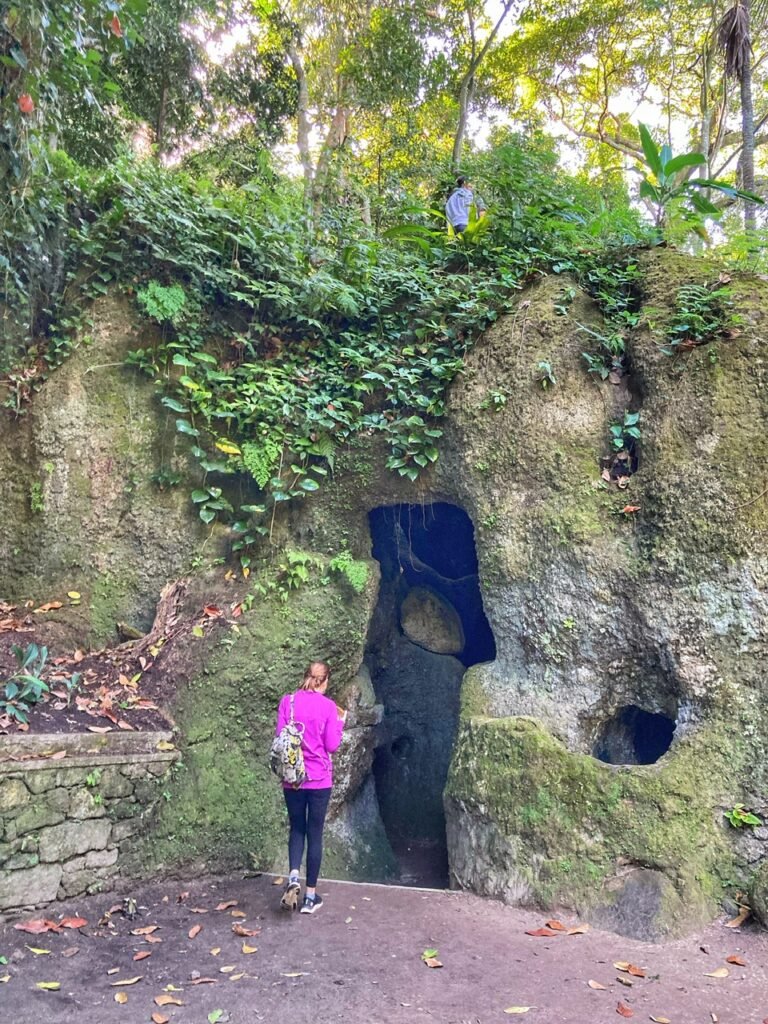
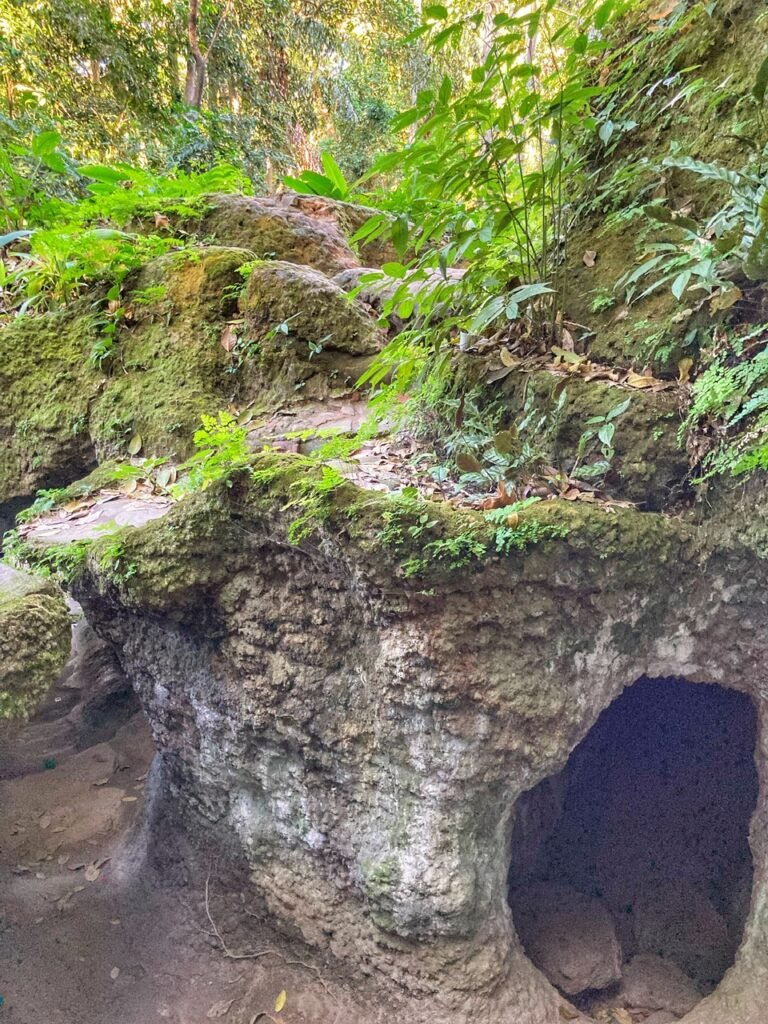
Time to explore some more! Seriously? This a city PARK?!
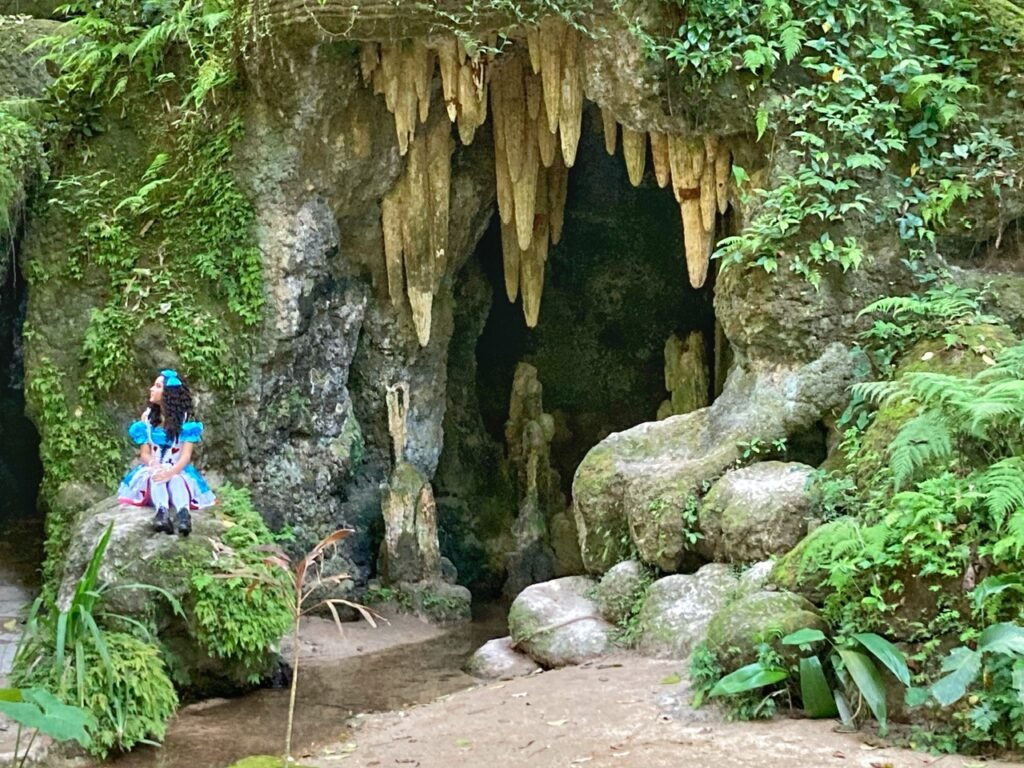
And wait…what?! A black-haired Alice is even tucked on tuffet. Errr…or was that Miss Muffet?!
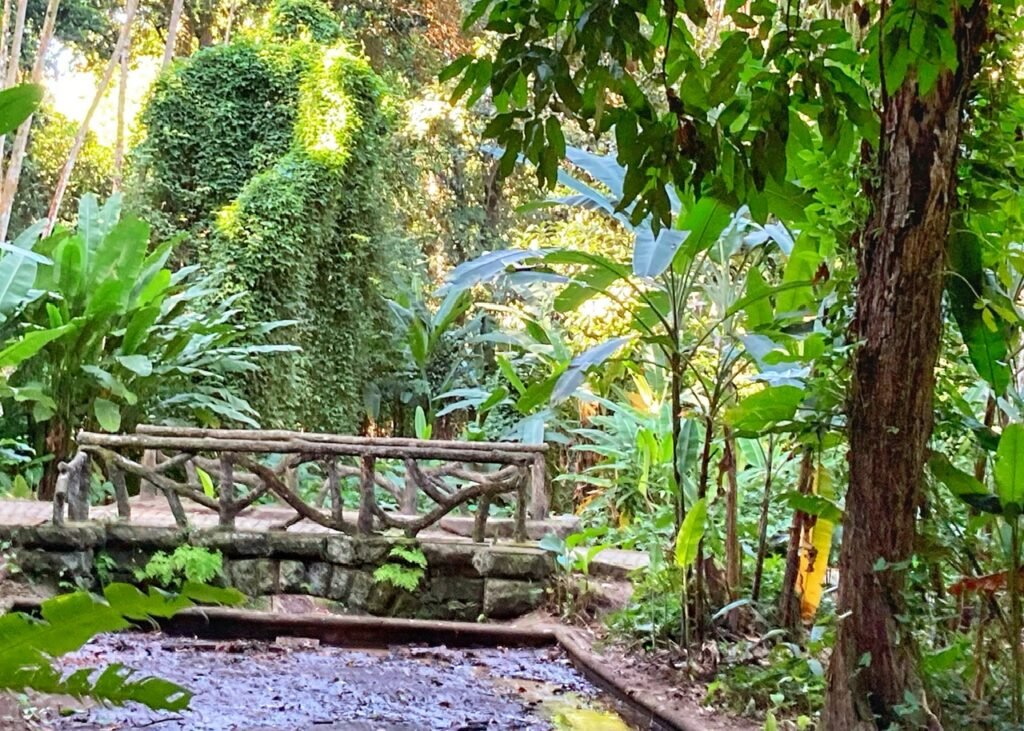
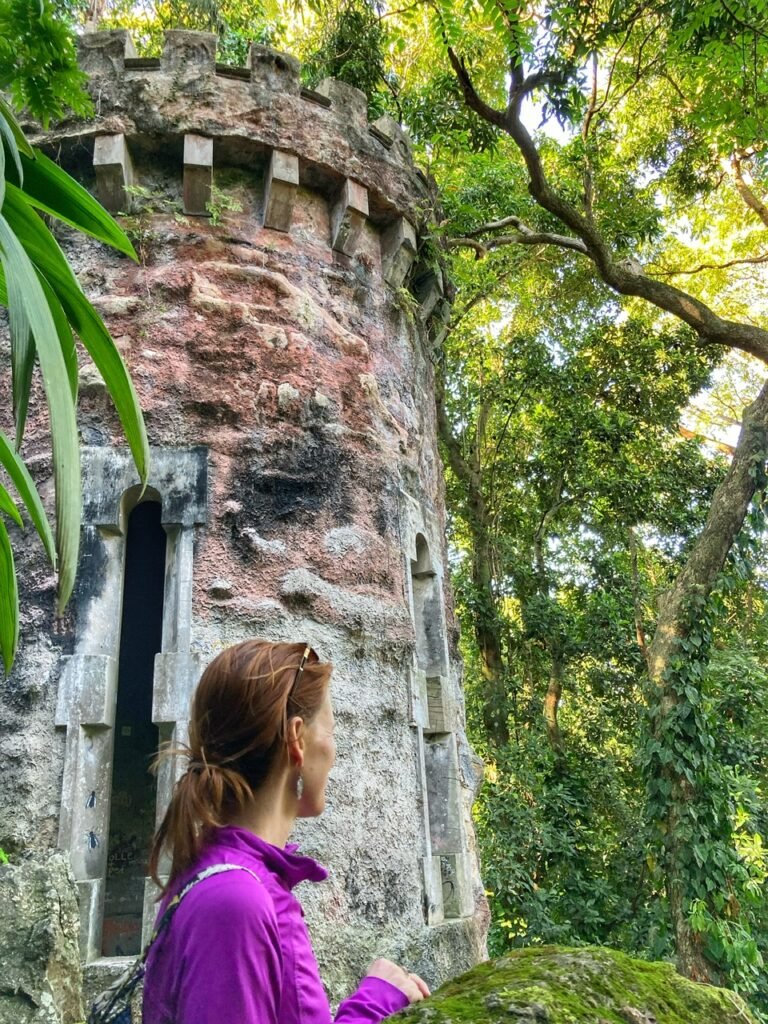
Mandy flocking to the castle. It suddenly feels like Europe, but she can walk this time!
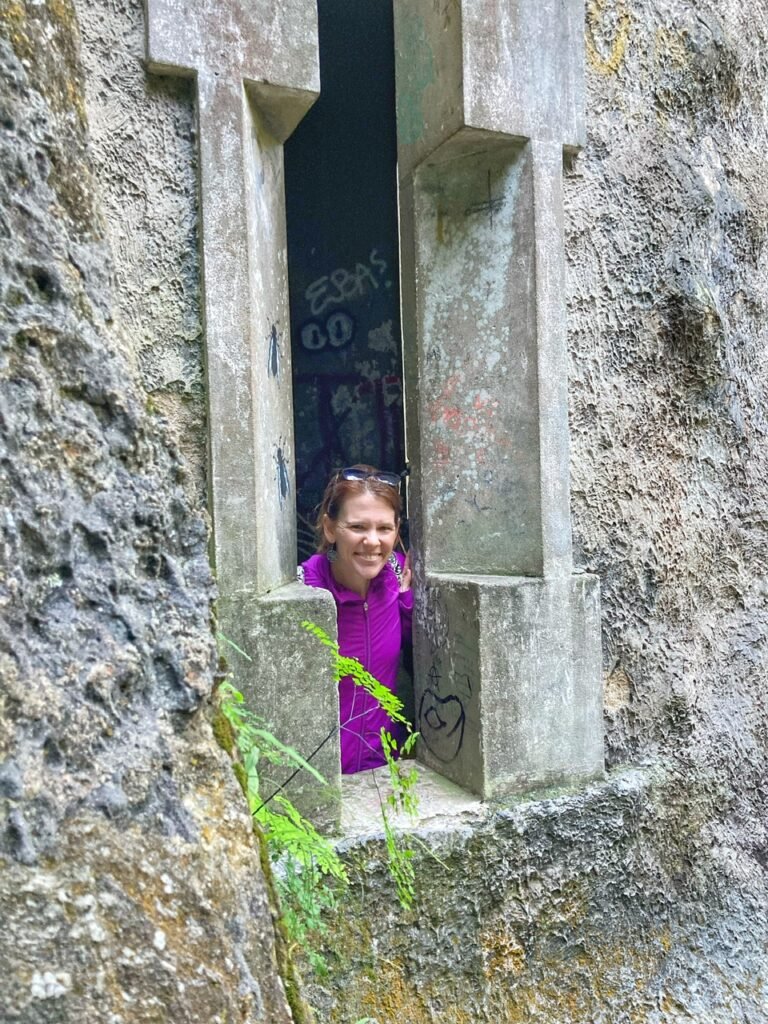
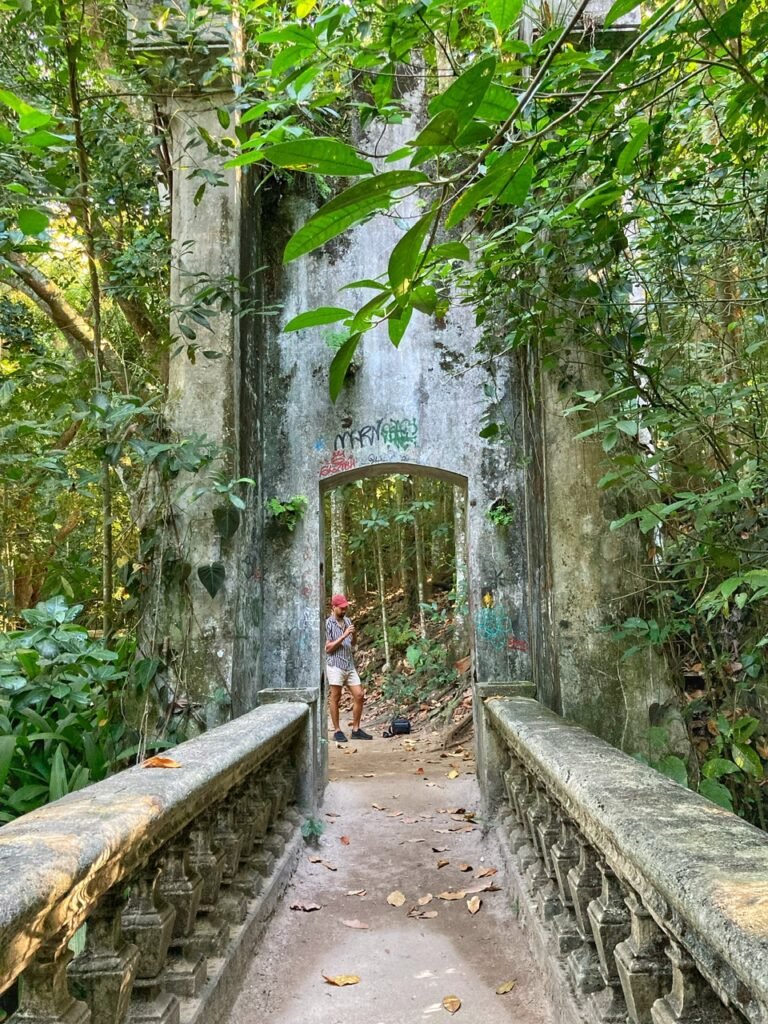
It even had a stone draw bridge.
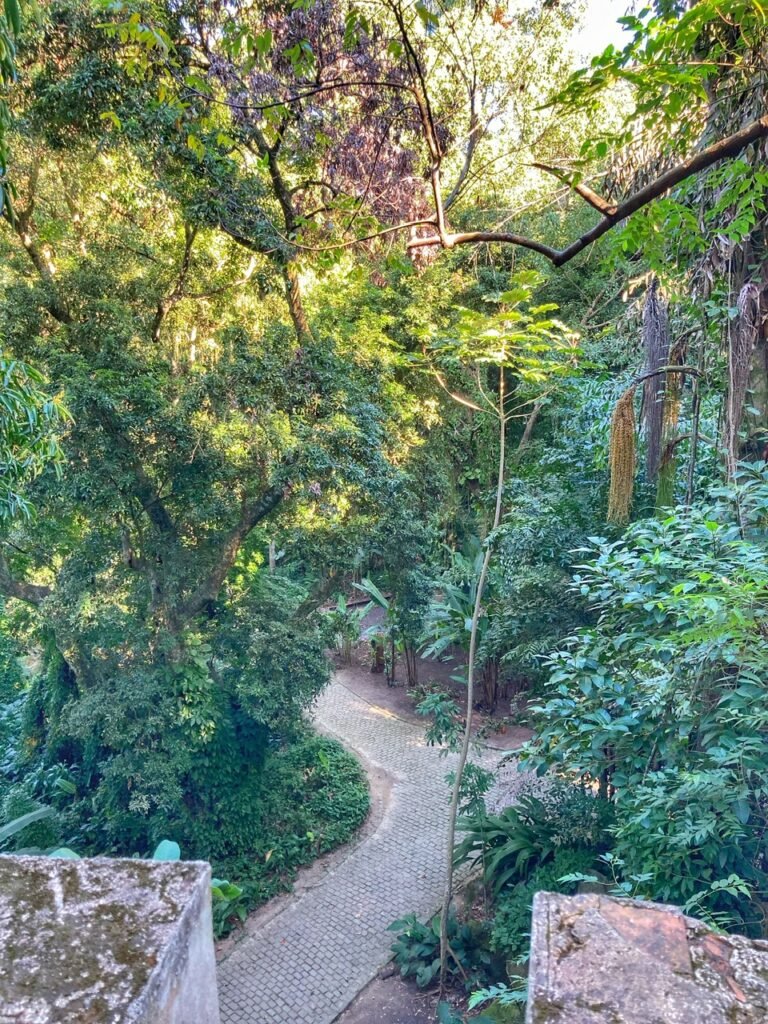
From the top of the tower, you could easily see the layers of the rainforest canopy.
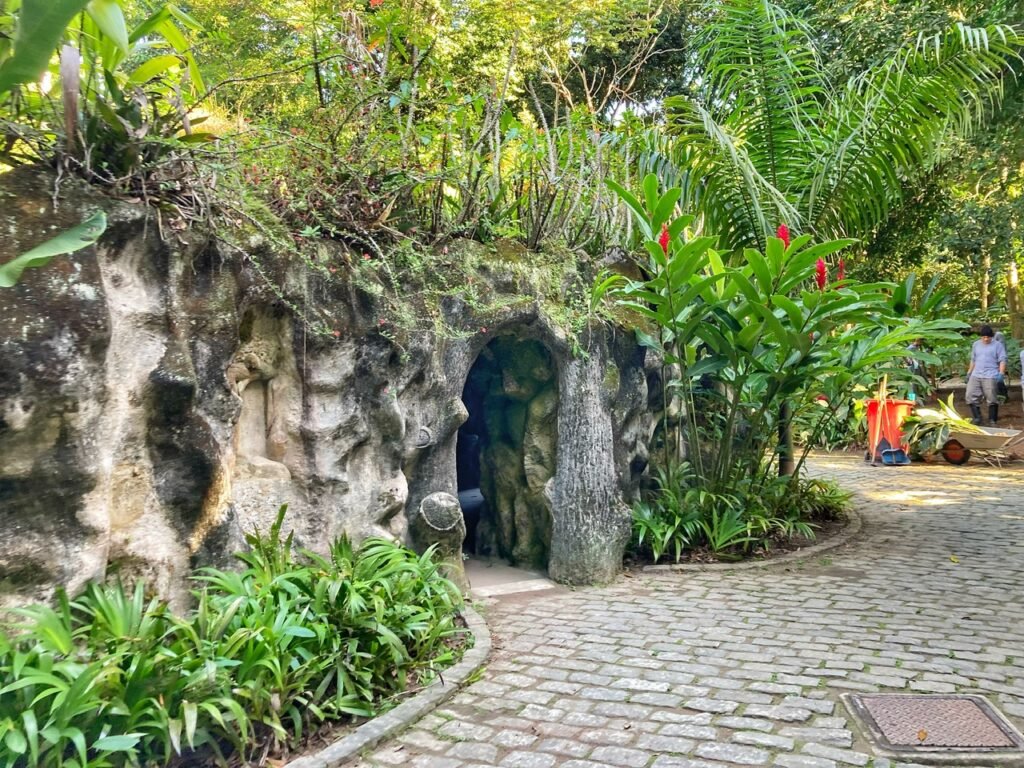

Continuing on, we found a Hobbit-like hole. And inside? An aquarium! With fish native to Brazil.
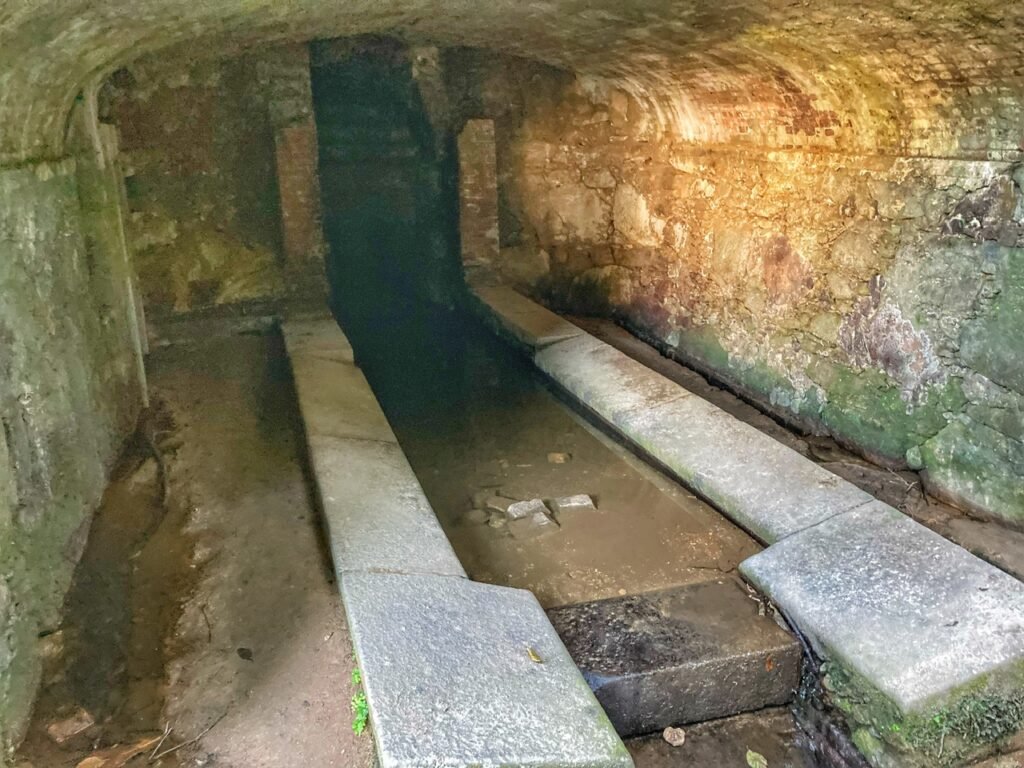
Some type of a spring.

And a dribbling waterfall…. It was around here our friends Brian and CC decided to eat some bananas they had in their bag.
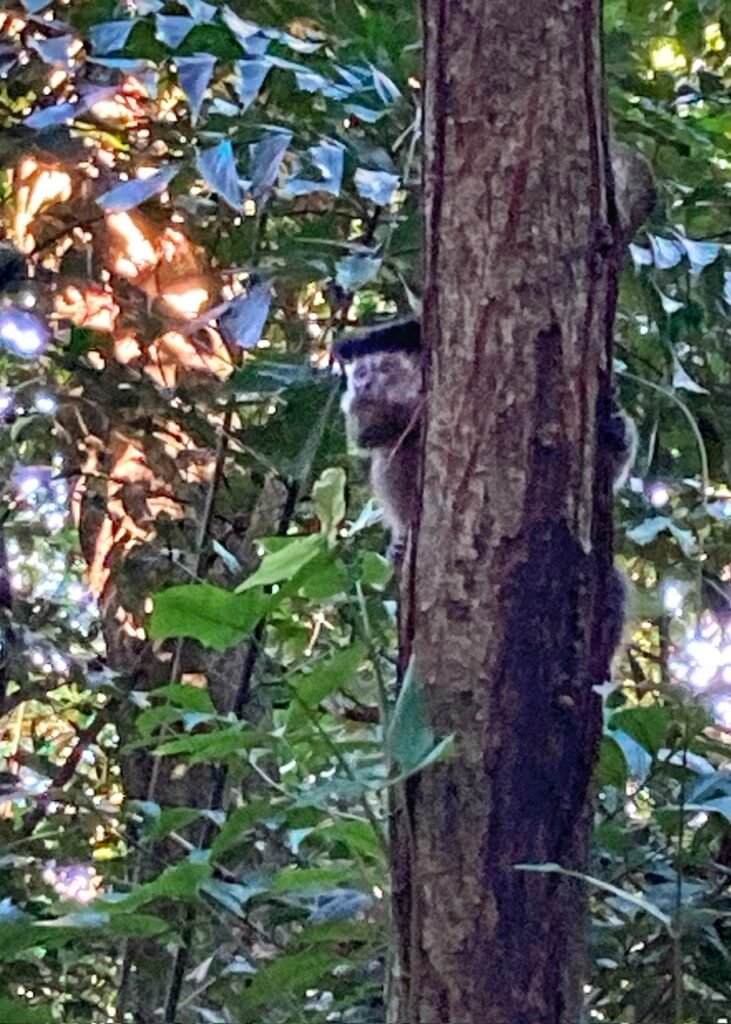

But a sneaky someone was watching! And soon enough, this toupeed black capuchin beggar came asking for a donation almost causing quite a scene.🙈 And once we saw one, we saw a whole lot more mischief makers. Their species is sadly threatened.
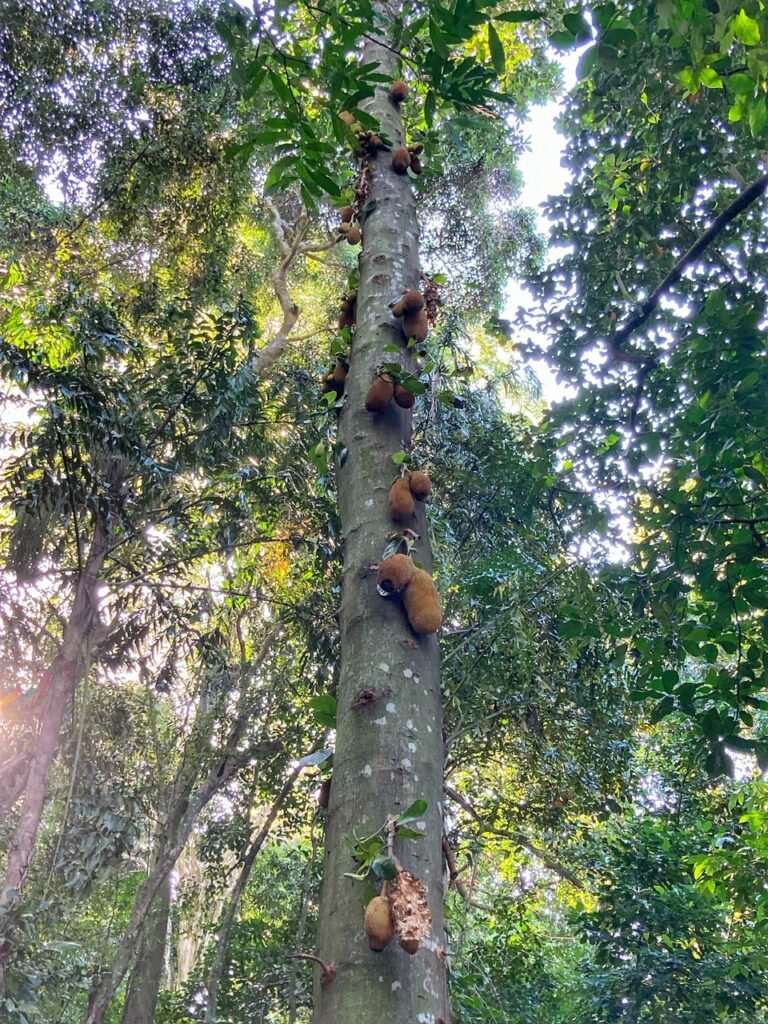
If only these plentiful jackfruits were easier to crack into!
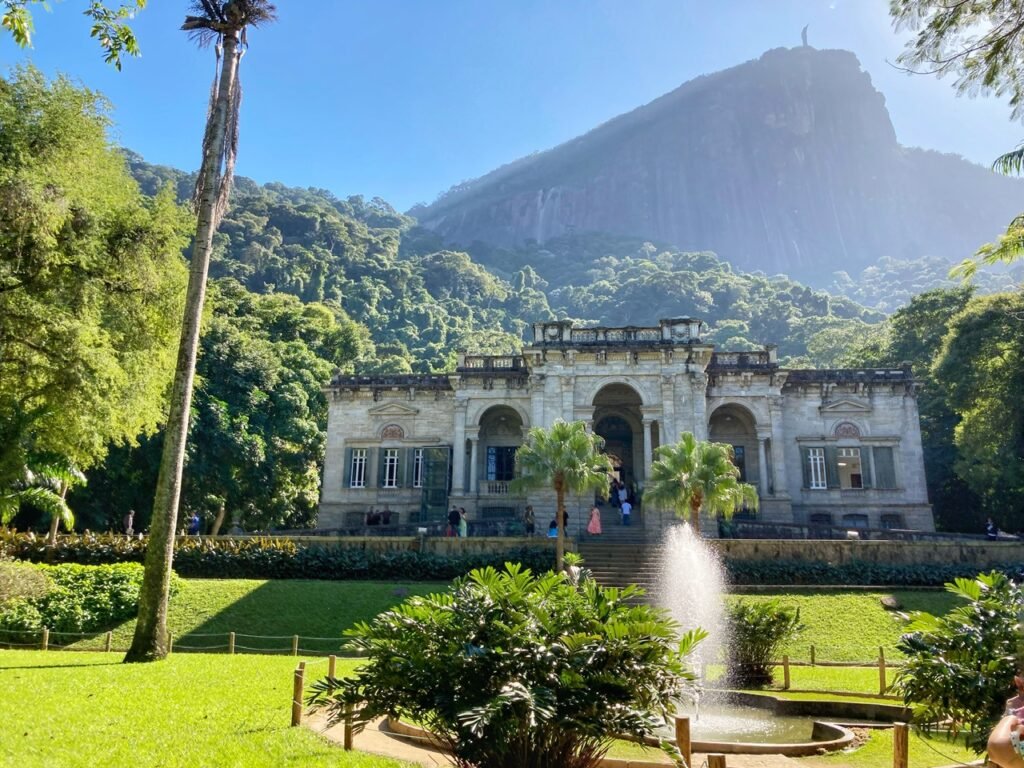
Once owned by industrialist Enrique Lage and his wife, a famous singer during her time, the park’s palacio mansion was remodeled in the 1920s by Italian architect Mario Vodrel.
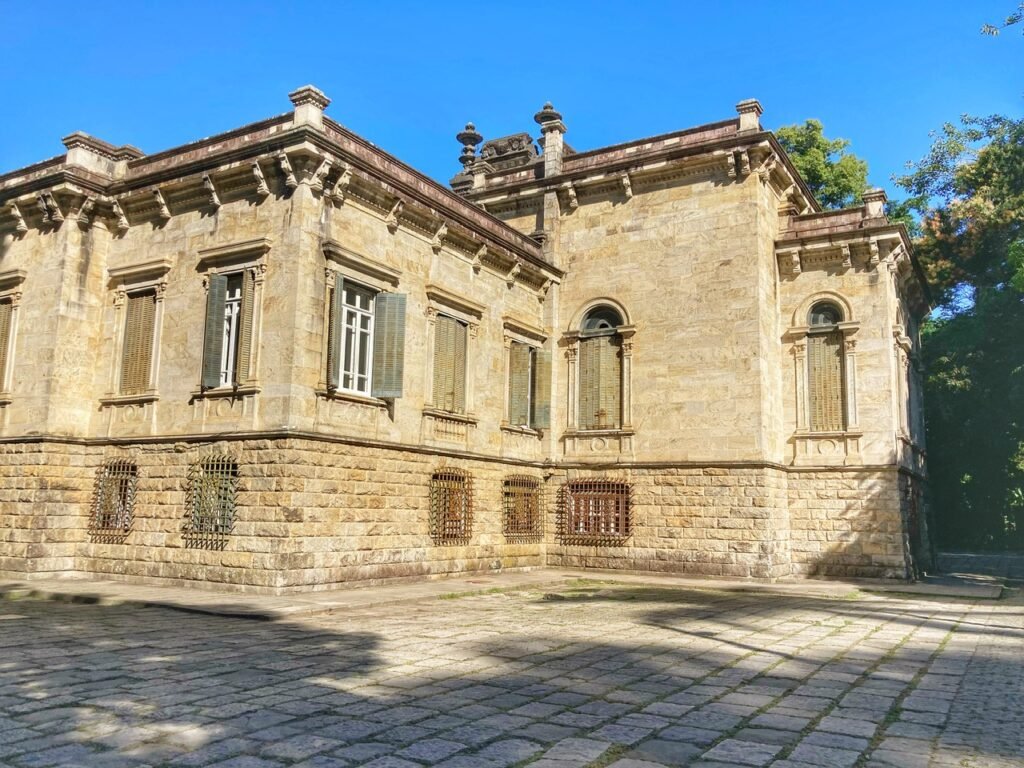
Decades later, in the 1960s, the land was converted into a public park, and walking trails, including the one up to Christ the Redeemer, were installed through the subtropical forests of Tijuca National Park that surround the mansion. (Atlas Obscura)
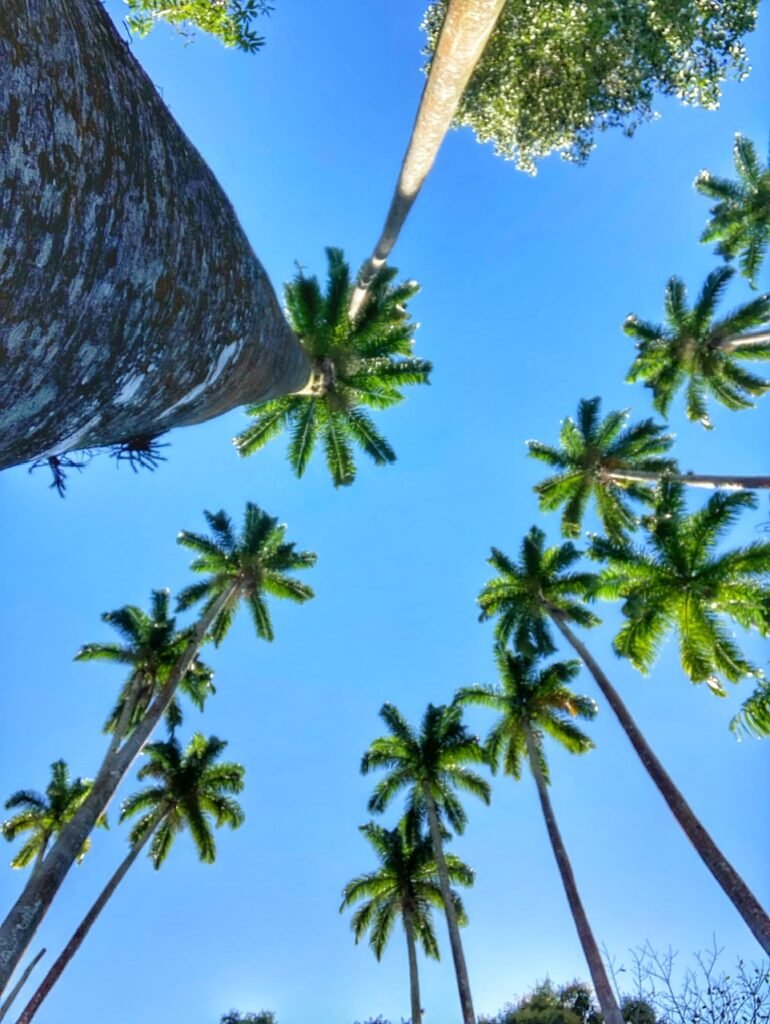
The entrance to the parque has the vibes of a Hollywood Boulevard…
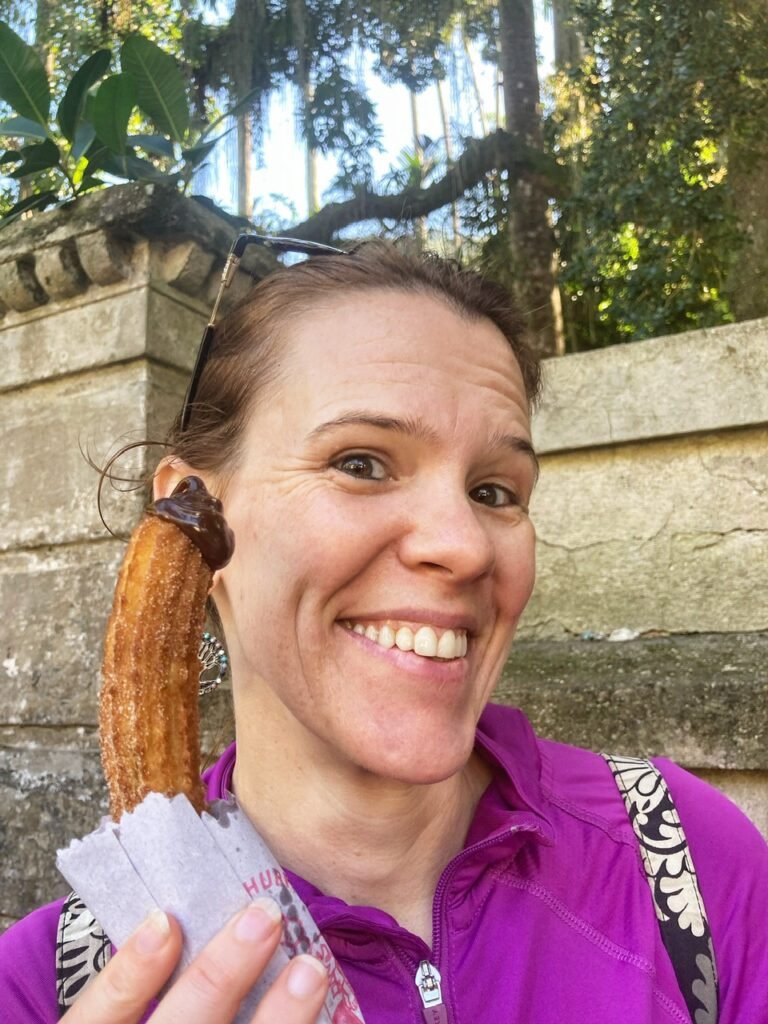
…And street sellers straight outta Mexico. Stuffed churros are surprisingly popular in Rio but cost way more at about $1.50.


